
CONTENTS ISSUE 4: FABLED
3 NEWS
Pandemic Leave Payment Restored
Campus News Society Intros
National News
Foot and Mouth Disease: Close Borders to Bali?
International News
We Are Nothing But Space Dust
Shells Land on Ukrainian POWs, Civilians, and Disrupt Exports
A Little Birdy Told Me: Musk Purchases Twitter
A Grapey Playlist: Fabled Edition
CHALLENGE: The Reckoning of Conventionality: Taylor Swift’s ‘folklore’
POP CULTURE REWIND: Enchanted
YOU ARE HERE: Penrith
26 FEATURES
4 Yom Kippur (begins) World Animals Day 11 International Day of the Girl Child 18 25
5 Yom Kippur (ends) World Teachers Day 12 19 26
6 World Cerebral Palsy Day 13 World Sight Day 20 27
7 14 21 28
8 15 22 29
OCTOBER 27 30 29 2 3 Labour Day (ACT, NSW, SA) 10 World Mental Health Day 17 Limb Difference Awareness Week (begins) 24 Diwali & United Nations Day
9 16 23 Limb Difference Awareness Week (ends) 30
38 CREATIVES
Macquarie University Provides Inadequate Support as Students Return to Face-to-Face Group Learning
Feminist Readings and Interpretations of Greek Mythology
There’s a Jinn in My Bathroom
Kurentovanje
Carved From Marble
Goldilocks
Fabled
Secrets of the Skulls
Devourers
Musings of the Greek Goddesses
Story of the World
Seadragon
Nic’s Flix: Where the Crawdads Sing
Grapey Book Club: “Bravely” by Maggie Stiefvater
“Macbeth” MQ Musical Society
Let’s Talk About Myths, Baby! Podcast Review
Horoscopes
4 5 6 12 13 15 17 20 21 23 24 27 28 31 33 35 39 40 41 43 45 46 48 50 52 54 55 56 Viewsexpressedbytheauthorsarenotthoseofthepublisher. 31 Halloween 1 2 3 4 5 6
MONDAY WEDNESDAY FRIDAY TUESDAY THURSDAY SATURDAY SUNDAY
Do you have an upcoming event? Let us know and we’ll do our best to include it in our calendar. Email: grapeshot@mq.edu.au 26 28 1 International Coffee Day
19 REGULARS
49 REPEAT OFFENDERS
Newsflashes
Ricky Martin Allegations
EDITOR’S LETTER
Welcome to Grapeshot’s fourth issue for 2022: “Fabled”! We are so glad you’ve been able to make it. Grab a cuppa, pull up a chair, and settle in - we’ve got some stories to tell you.
The first story is this: this year has been a wild ride. At the beginning of the year, Saliha and I found ourselves in a position where we realised we didn’t know half of what we needed to know to put together an issue of a magazine, let alone six in a year. We were daunted, but Saliha worked hard to build a team out of one that fell slightly apart, and to teach me as best she could. Now, after such beautiful work, Saliha is on to bigger and better things, and I am trying my best to stand steady at the helm. This issue is dedicated to the best Editor-in-Chief that Grapeshot has had, but didn’t realise until it was too late, as tends to happen with all good things. Thank you, Saliha. I promise I will continue to give a voice to those who desire to be heard.
The second story is about what this issue contains: this issue is about fables; those mythical stories that are central to the values of a culture, where animals play human for a day in order to highlight, ironically, those very human follies. Fables provide us with morals, those overarching rules of life that are transcendent across time and space, across generations and continents. More than that, they are fun and engrossing, and provide us with the capacity to reflect on ourselves and the most existential elements of our lives.
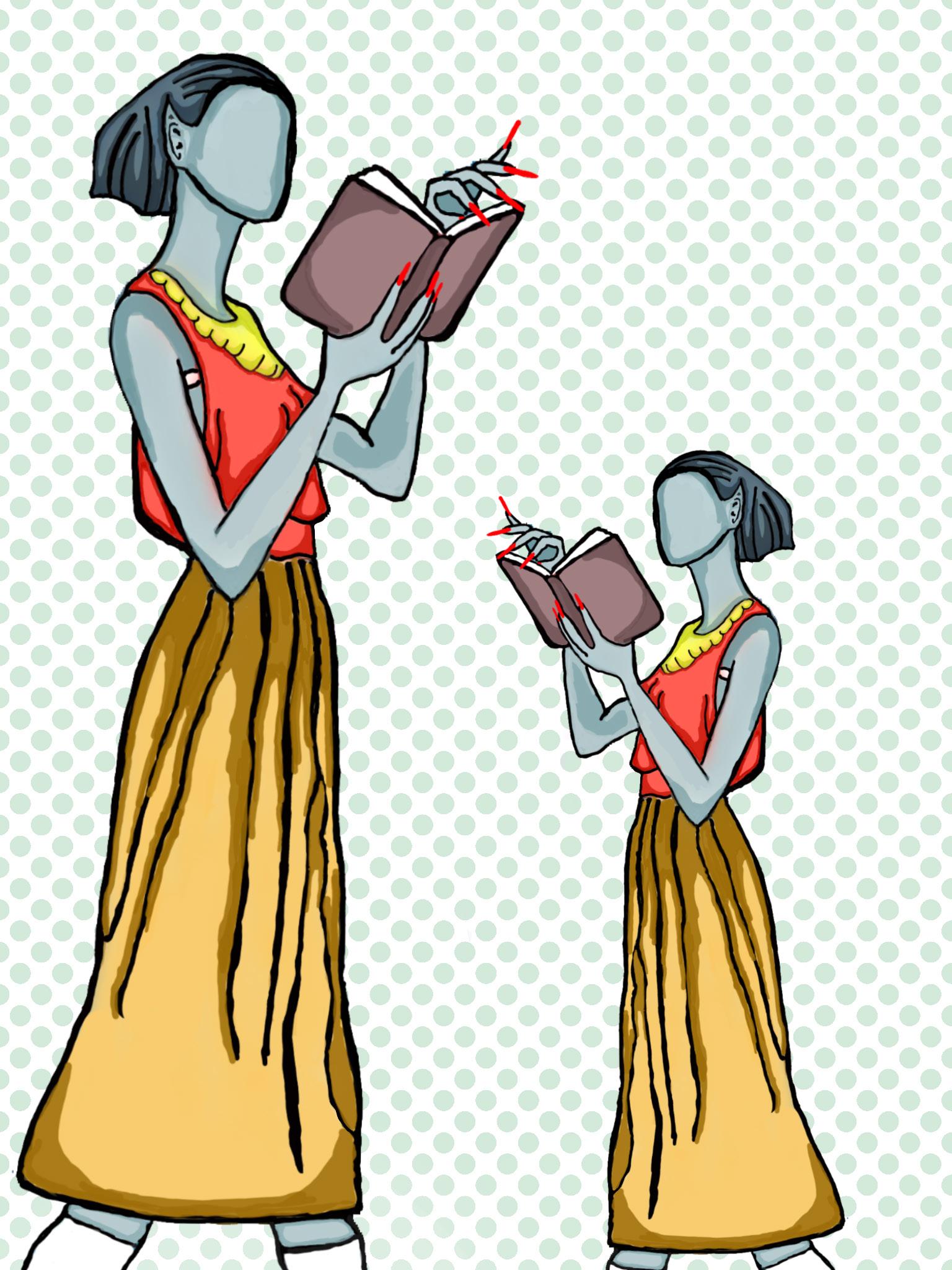
Within this issue, you’ll find reminiscences of “enchanted” films, a Feminist interpretation of Greek myths, a haunting figure from Islamic beliefs, supernatural creatures, otherwise legendary reviews, and more.
This issue is so near and dear to my heart, being one that I have had the idea for ever since I started at Grapeshot. The experiences I have had at this magazine have been life-changing. I wanted a way to provide other people with the ability to experience a similar kind of magic when they open this publication.
I hope that within these pages you read an article or see an artwork that sparks an interest, a connection, something magical inside yourself. I hope this issue inspires a change to save yourself from the ruins, as is the moral with many fairytales. Most of all, I hope you enjoy “Fabled”.
With love,
Nikita Byrnes, Editor-in-Chief August, 2022
NEWS
NEWSFLASHES
PROTECTION ORDERS DISMISSED AGAINST RICKY MARTIN
Drama has emerged surrounding pop-star Ricky Martin and possible abuse allegations. Jasmine Joyan takes you through the facts.
In July 2022, singer Ricky Martin was given a restraining order in Puerto Rico after allegations of domestic violence against an alleged former partner. Under the Domestic Abuse Prevention and Intervention Act, Martin was served the order and was required to appear in court on 21 July 2022.
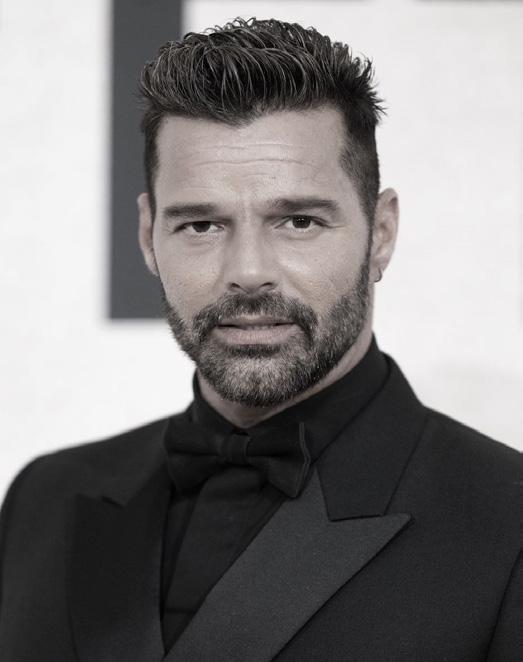
Whilst the applicant serving the order was initially unclear, Martin’s brother, Eric Martin, confirmed to Spanish newspaper Marca that the person seeking the order was Martin’s 21-year-old nephew. During this period, Puerto Rico newspaper El Vocero wrote that the order came from someone who Martin dated for seven months and broke up with around May. [1] Despite breaking up, Martin continued to loiter near the accuser’s house. The applicant “fear[ed] for his safety” and went straight to a judge for an order instead of filing a police report first. [2]
Both Martin and his representatives have spoken out, denying all allegations. His representatives have stressed that these allegations are “completely false and fabricated” and have been “confident…Ricky Martin will be fully vindicated”. [3] Martin also went to Twitter before the hearing reiterating that such claims are “completely false allegations” and will respond through the “judicial process with facts and the dignity that characterise” him. [4]
On 21 July 2022, Martin appeared in court virtually where the judge was to determine if the protective order would be extended. Martin’s nephew withdrew the claims including the claim of the incestuous affair, dismissing the case.
After the dismissal of the order, Martin’s legal representatives released the following statement:
“The accuser confirmed to the court that his decision to dismiss the matter was his alone, without any outside influence or pressure, and the accuser confirmed he was satisfied with his legal representation in the matter. This was never anything more than a troubled individual making false allegations with absolutely nothing to substantiate them. We are glad that our client saw justice done and can now move forward with his life and career.” [5]
Despite this dismissal, Martin is still facing another lawsuit from his former manager in claims for $3 million owed for unpaid commissions. [6]
by Jasmine Joyan
[1] https://www.thecut.com/2022/07/ricky-martin-allegations-everything-you-need-to-know.html
PANDEMIC LEAVE PAYMENT RESTORED
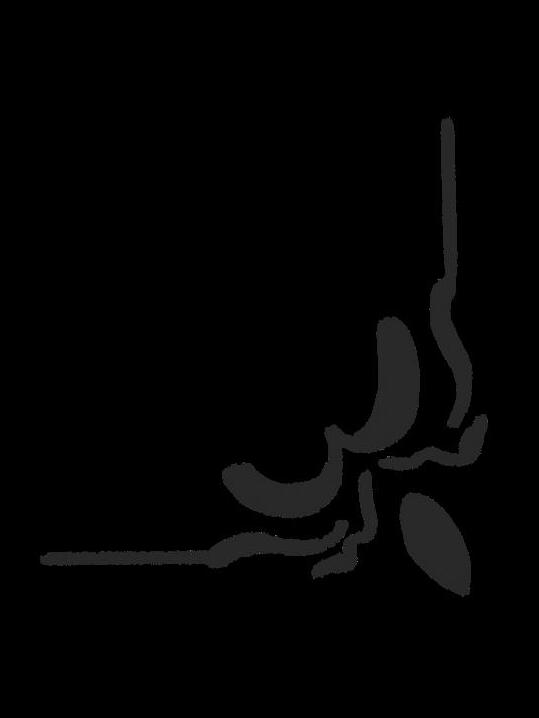

What is the situation with the pandemic disaster payments, now that the rules have changed yet again? Jasmine Joyan takes you through the latest.
From 20 July 2022, workers with Covid-19 without sick leave entitlements will be able to re-apply for financial support. The payment system, which originally ended on 30 June 2020, will continue to further support workers’ claims where they are required to isolate.
The payment provides a lump sum amount to people who are unable to access their sick leave and cannot work due to Covid isolation requirements. The payment was originally created in 2020 to assist essential workers and people caring for someone self-isolating. The amount paid varies based on the hours worked and lost. Those who lose between eight to 20 hours work are entitled to $450, while those who lose more than 20 hours can receive $750.
The Labour government initially did not intend to bring back the disaster payments, but reversed this decision after pressure from the medical community and State and Territory leaders as they continue to grapple with Covid during the winter flu season.
In order to be eligible for the disaster payments, applicants must have the following: Have lost at least eight days or a full day of work; Have liquid assets of less than $10,000 on the first day of the period being claimed; Not have any paid work or income support payments; Couples can both claim but require separate lodgements.
All claims will back date from 1 July 2022. Claims must be made within 14 days of the beginning of a self-isolation period.
by Jasmine Joyan
Image Source: Cosmopolitan
[2] https://variety.com/2022/music/news/ricky-martin-deny-abuse-nephew-response-1235318172/ [3] https://people.com/music/ricky-martin-denies-allegations-domestic-abuse-restraining-order-puerto-rico/ [4] https://twitter.com/ricky_martin/status/1543764013141614594?ref_src=twsrc%5Etfw%7Ctwcamp%5Etweetembed%7Ctwterm%5E1543764013141614594%7Ctwgr%5E16a0bad794bd169f5e43efea8d26cd0eb249d384%7Ctwcon%5Es1_c10&ref_ url=https%3A%2F%2Fwww.thecut.com%2F2022%2F07%2Fricky-martin-allegations-everything-you-need-to-know.html
[5] https://www.thecut.com/2022/07/ricky-martin-allegations-everything-you-need-to-know.html
[6] https://www.tmz.com/2022/06/29/ricky-martin-sue-ex-manager-breach-contract/
4 NEWSFLASHES
5
DRAMAC
SOCIETY INTRODUCTIONS
Accounting Students Association (ASA)
ASA provides social and professional events to aid students in achieving their personal and professional endeavours. Through partnerships, we connect our members with industry professionals and resources that enhance knowledge, wisdom, and business experience. Our events help elevate employability skills, connect with qualified individuals from industries, and forge strong peer networks. Become a member by completing our signup form at https://bit.ly/3QgLGB0. ASA’s annual membership fee is $5, which can be paid at any of our events (including O-Week). Follow us on Facebook (@MQasa) and Instagram (@ mqasa) to get updates on our events!
Archaeology Society of Macquarie University (ASMU)






ASMU members receive updates on fantastic archaeological events at the university, events at MQ History Museum, and opportunities for excavation. With close involvement with the Faculty of Arts and the Department of History and Archaeology, ASMU provides degree-focused information and events, such as Lunch with Lecturers and networking opportunities with archaeological professionals. ASMU also runs a variety of social events, such as movie nights, ceramic painting, scavenger hunts and general gatherings, to give you a chance to chat to classmates outside the classroom. Follow ASMU on Instagram and Twitter (@Archaeology_MQ). If you have any questions or would like to become a member, visit (www.asmu. group) or send an email (archaeology.mq@gmail.com).
Actuarial Students’ Society (ASSOC)
ASSOC provides quality experiences across a diverse range of areas for students in the Business School. We host IT workshops for languages such as Python and social events such as Escape Rooms. Furthermore, our flagship events include ASSOC Ball and Meet the Professionals Night (MPN). ASSOC Ball will be held in the Crystal Ball Room at Luna Park and we’d love to see you there during the midsession break! MPN is your classic Careers Expo on steroids – we’ve invited over 10 different sponsors from banking, consulting and insurance. The second option is to become part of our teams, from which you will gain more friends, more skills, and more fun. We take in new committee members every semester but feel free to reach out!
Clinical Science Society (ClinSciSoc)
At ClinSciSoc, our core values are the cornerstone of our vision: a culture of academic excellence, charitable community outreach and professional networking (see more at https://bit.ly/3P89G8c). If this aligns with your values, the Clinical Science Society has events designed for you. Furthermore, our events also rely heavily on member feedback. We pride ourselves on putting our members and their needs first. The link to our membership page is https://www.clinscisoc.com/why-join. All our socials and contact information can be found in the blue ribbon footer and header of our website.
DRAMAC is the MQ student theatre society. Whether you want to watch plays, get involved in tech crew, perform on stage, or otherwise enter the world of theatre, this is the society for you! We hold workshops teaching theatre skills and produce eight shows a year in the Lighthouse Theatre - one of the largest amateur stages in Sydney. We host a range of shows, from Shakespeare adaptations to student-written plays. We have several shows coming up and we post callouts for different roles on our Facebook (@DRAMACSociety) and Instagram (@dramacdrama), so check those out if you want to get involved. If you wish to sign up, visit linktr.ee/DRAMAC.
Fellowship of Overseas Christian University Students (FOCUS)
FOCUS is a student group where international students gather to make friends and learn about the Christian faith. Our slogan is ‘Make Friends, Meet Jesus’. Students from all cultural and religious backgrounds are welcome. We would like to be a home away from home for international students. Members can discover more about Christianity and who Jesus is, as well as practice speaking English with other students. We meet every Friday at 6:30pm at Trinity Chapel Macquarie for food, music, and bible studies, which are held in different languages throughout the week. We also host social activities throughout the semester where students can explore what Sydney has to offer during their time here.
Filipino Student Society of Macquarie University (FSSMQU)
FSSMQU is a community of students and alumni who share a love for the Philippines. We foster a welcoming, healthy and safe environment for Filipino students and non-Filipino students who are interested in learning about our cultural heritage and traditions. You can join to be a ‘Barkada Member’ (‘a group of friends’) through our membership forms available on our linktree and social media pages, and gain access to discounts with our partners. We host regular social events such as Maligayang Mondays (online & f2f hangouts), Samahan (welcome gatherings), and Barkadas & Cakes (bake sale), as well as major events (check out our social media!). We also provide opportunities for our members to gain professional experience and leadership opportunities by joining our executive team. If you are interested, our committee expression of interest form and social media are on the linktree: https://linktr.ee/fssmqu.
Macquarie University Soccer Club (MUSC)
MUSC is a social and competitive club which competes in the North Western Sydney Football Association, representing the University with multiple mixed and womens teams. We train every Wednesday night and play games on the weekend. We also organise pub crawls, BBQs and meet-ups to watch EPL and Champions League games. MUSC competes during the winter season (April to August) so we are not currently taking on new players. If you are interested in joining, you should follow our Facebook and Instagram (both @macunisoccer) so that you know when we will hold trials for the next season! We hope to see you on the field!
CAMPUS NEWS 6 CAMPUS NEWS
CAMPUS NEWS
7
Macquarie Exchange Students Society (MACex)
MACex is seeking new members for our team! If you are passionate about helping new students from all over the world learn about Sydney, this role is for you! We aim to help students who are new to Sydney be immersed in our diverse culture. Our goal is to help our members explore our city in a safe environment, and help them make meaningful memories while they’re here. If you have any suggestions or questions, send an email (macex.society@gmail.com)! If you are passionate about promoting events, creating posts to help new students settle in, or creating events to make meaningful memories, apply online (through https://bit.ly/3bHnR6s). We
Macquarie Musical Society (MacMS)
Macquarie Musical Society (MacMS) is dedicated to musical theatre. We operate out of the Lighthouse Theatre, presenting 6 shows a year. We encourage everyone to get involved; MacMS provides the perfect inclusive community environment for self-expression, developing skills, and forming friendships. We have two more shows coming up: ‘Catch Me If You Can’ showing October 7th and 8th, and 12th to 15th at our Lighthouse Theatre; and ‘The Spongebob Musical’ showing November 18th and 19th, and 23rd to 26th. Tickets for both shows are available from linktr.ee/macms. Members receive discounted tickets, so head to macms.getqpay.com to sign up! Follow us on Instagram (@macquariemusicalsociety) and Facebook (Macquarie Musical Society) to keep updated!
Macquarie Ancient History Association (MAHA)






MAHA aims to promote the study of ancient history, foster social connections between ancient history students, and offer various social and ancient history-related events and opportunities for further learning. MAHA holds many different events, including our annual Revue comedy show in the Lighthouse Theatre, our Drink Talk Learn event where we present drunk PowerPoint presentations at the Ranch Hotel, and our Lunch with Lecturers event where students can meet and talk with some of Macquarie’s ancient history and archaeology lecturers and tutors. This year, we are also partnering with Guide Dogs NSW/ACT to raise awareness for a great cause (check it out at mahastudent.com) with some profits going straight towards Guide Dogs. Follow us on Instagram (@maha.students), Twitter (@MAHAStudents), and Facebook (MAHA Students).
Macquarie Dance Academy (MDA)
Macquarie Dance Academy (MDA) is dedicated to street dance. Street dance is an umbrella term for styles that were created outside of a studio setting, such as Hip-Hop, Breaking, Krumping, and Popping. We offer classes for complete beginners to intermediate dancers for choreography, tutting, krump, and are looking to have workshops for various other styles such as Hip Hop and Waacking. We also have a choreography crew which performs at showcases and events, as well as a battlecrew which train freestyle and represent MDA in dance battles in the Sydney Street Dance Community. The best way to join is to follow our Instagram (@mqdance). We have a linktree with a signup form or just come to a class or an event and we can sign you up there.
Macquarie Marketing Student Association (MMSA)
MMSA is all about empowering our marketers of tomorrow, aka. you. MMSA was launched back in September 2017 and has now grown to a community of 1000+ students. We’re all about delivering valuable opportunities, events, information, tips ‘n’ tricks, and networking to you. We aim to elevate your university experience, provide real-world connections and applications with your studies and expand your network with both professionals and like-minded students. Feel free to follow our socials (@mmsamq) and our website (www.mmsa.org.au) and become an official member at https://mmsamemberships.getqpay.com/.
MQ Book Club is run by and for book-loving students. We are free to join and hold various events throughout each Semester. Our main consistent event is our Book of the Month (BOTM) where members suggest and vote on a book to read each month, and meet up at the end of the month to discuss. Other events include a Book Bingo, movie and trivia nights, and book swaps. We even have a new small club library thanks to member donations! We are still relatively new with ambitions to run more frequent and varied events, including visits to book fairs and bookshop cafés, and weekly reading sessions where members can bring along anything they want to read and have 2-3 hours of dedicated reading time. Everyone is welcome to join!
DO YOU LOVE TAYLOR SWIFT? Whether you’ve memorised every Track 5 or simply enjoy jamming out to Love Story, we’d be enchanted to meet you. This semester, we plan to host Taylor-Themed Trivia followed by a Miss Americana viewing on campus, a Zoom Night (with an album theme yet to be announced!), and an End of Year Karaoke, and Era Dress Up Night. We create beautiful giveaways and prizes, such as our handmade Taylor Swift bracelets or our recent O-Week giveaway, a Reputation-themed box of goodies valued at over $60. Stay tuned for the next merch and giveaways. Join by heading to our instagram (@mqswifties) and following the link in the bio.
Macquarie University Harry Potter Society (MQHPSOC)
Greetings (potential) witches and wizards. The MQ Harry Potter Society is here to welcome you to the Wizarding World…with a range of events. These include movie bingo nights, wand making, trivia, minute to win it, murder mystery, games nights, and more! Ticketed events include our MASSIVE yule ball cruise, strike bowling/laser tag, and potions-making cocktail nights. We provide snacks and drinks at every event, and most of our events involve prizes. Trivia? Check! Minute to win it? Movie Bingo? Check and Check!! Interested? Find us on the QPay app and Instagram (@mqhpsociety) and Facebook (MQ Harry Potter Society) or send us an email, and we can sort you out (mqhpsoc@gmail.com)!
CAMPUS NEWS 8
CAMPUS NEWS
9
MQU Climbing Society
Come join the Macquarie Climbing Society for our weekly casual climbs! We host indoor climbs on Mondays 5pm at Climb Fit St Leonards and on Wednesdays 5pm at 9 Degrees Parramatta & Lane Cove (alternating). All skill levels are welcome, with many of our members starting with no experience at all. We also host various fun and exciting socials throughout the year so try something new and come get to know us over a climb and a drink afterwards! All events are posted on our Facebook and Instagram page (@mquclimbingsociety)!
MQU Indian Society
Our society is a community of Indians from different parts of the diverse nation who love to embrace being Indian and want to share our rich culture with others. We organise various events throughout the year ranging from sports events, social events, and cultural events, such as an intersociety cricket match, a cruise party, meet and greet, movie night and our very own start of semester party! Members gain discounted tickets for all our events, which you can be a part of by visiting our Instagram (@mqindiansociety), and clicking the link in our bio. Our ultimate goal is to promote our culture within the community and help students connect to their roots whilst being away from India. If you’re looking for friends, a great time and a way to be part of our Indian culture and community, joining the Indian Society is definitely for you!
MQ Volleyball Club (MQVC)
Are you interested in Haikyuu? Do you want to see Rolling Thunder in action? Come join MQVC! We are inclusive and beginner friendly but we also welcome competitive players who are seeking a new volleyball family. There are opportunities to represent MQVC in local tournaments (e.g. Syd Cup, State Cup), social competitions, and interstate competitions (e.g. Good Neighbour). Stay tuned for more exciting news to come! Membership registration is still open for Semester 2! Members can join our social training sessions once a week for the whole semester! Please follow us on Instagram (@mquvolleyballclub)!
Macquarie University Global Health Society (MUGHS)

MUGHS advocates for global health involving: Sustainable living and practice, refugee and asylum seeker health, sexual and reproductive health, and general domestic and international health and wellbeing. We continually work with healthcare professionals, policy changers and advocates of and for our future, as well as the Australian Medical Students’ Association to improve our reach. Some of our events include Refugee Rallies, Birthing Kit Night, Teddy Bear Hospitals, Clothing Drives and social meet ups. We continually campaign for various causes throughout the year! If you are interested in joining our society, check out our 2022 Information Booklet (https:// bit.ly/3C0Lpy9), our membership form (https://bit.ly/3AbDf4v), and look us up on Instagram & FB (@mughs.mq) or email us (muglobalhealthsociety@gmail.com).
MQU Water Polo Club (MQUWP)
MQUWP is a social and competitive club that represents MQU in the Sydney Metropolitan competition. We host various social activities throughout the season including season kick-offs, presentation nights, pub crawls, picnics, bbqs and even beach water polo weekend trips away! We also assist in fielding Intervarsity Uni Cups & National Uni Games that play all over Australia! If you’ve played before or are wanting to give water polo a try we cater for all levels and welcome new members! If you are a confident swimmer, come along to any of our free training sessions! Stay tuned & contact us through our socials for more club info and events (@mquwaterpolo).
MQU Women Entering Business (MQU WEB)




WEB is a women-run society aiming to improve student professional confidence. We have over 15 sponsors who are mostly large international or Australian companies seeking proactive students for internship, vacation and graduate roles. Here, WEB’s events (all GLP approved) allow an opportunity to grow networks with our sponsors’ representatives, enhance professional skills, discover how to make an impression during the recruitment process, and learn about your dream industry. This year, WEB’s third annual guide will involve application advice, interviews with industry leaders, and insights into industries. Additionally, our annual flagship Alumni Night event is a great opportunity to connect with our sponsors, network with event speakers, and meet like-minded students. Sign up (www.womenenteringbusiness.org/membership) for $5.
Singapore Students Association of Macquarie
We are a group of students from the little red dot known as Singapore. Being away from friends and family for an extended period of time, it can be difficult. Hence, we aim to bring a sense of home and belonging; a “home away from home”. We hope new members find a community that they can rely on throughout their tertiary education overseas. Many lifelong friendships have been forged through SSAM and our events. Our events include trivia night, board game night, a scavenger hunt, an inter-varsity sports event, and a National Day Parade screening with Singapore Students Association groups from other universities. Join us for only $10 and connect with us on Instagram (@mq_ssa) or our Telegram group chat (https://t.me/+vF4biJC1tb1mNTFl).
STEM Equity Alliance
STEM Equity Alliance encourages confidence in STEM education and careers. We have two simple goals to promote engagement, persistence, and achievement in STEM: creating friendships within a community of like-minded people from all backgrounds and degrees; and acting out our social responsibilities as global citizens in STEM. We are currently developing a STEMEQ experience day to bring to schools in low socioeconomic areas and other disadvantaged groups encouraging the vast possibilities of futures in STEM. We’re also planning charity events and fundraisers like our duck-song themed lemonade stand (we got grapes). We also host social events like game nights, sushi shindigs, and mental health focused events. If you want to get involved please register and follow our socials to know about upcoming events and how to contact our friendly team of executives, or become one.

CAMPUS NEWS 10
CAMPUS NEWS
11
FOOT AND MOUTH DISEASE OUTBREAK
In May 2022, foot and mouth disease (‘FMD’) was first reported in Indonesian cattle. [1] Indonesian authorities then confirmed a FMD outbreak within livestock in Bali on 5 July 2022. [2]
Australian frontline biosecurity officers are taking extra measures regarding flights arriving from Indonesia. This aligns with Australia’s strict biosecurity protocols established to prevent highrisk materials from entering the country by travellers. These measures include biosecurity checks, greater communication material profiling, and inspections of passengers and mail users.
Furthermore, new legislation, the Biosecurity (Foot and Mouth Disease Biosecurity Response Zone) Determination 2022 (Cth), was established to further bolster biosecurity measures. This provides guidelines for biosecurity officers to follow to prevent the entrance and transmission of FMD in Australia.
What is foot and mouth disease?
The contagious viral disease affects all clovenhoofed animals except horses such as cattle, sheep, goats, buffalo, camelids, and pigs, which are essential to the agriculture industry. Live animals, meat, dairy products, and contaminated soil, bones, hides, vehicles, and equipment, clothing, footwear, and food, can all be carriers of FMD. [3]
FMD transmits through breath, saliva, mucous, milk, and faeces, which is very capable in packed livestock pens. Animals subsequently can become infected through inhalation, ingestion and direct contact. Animals with FMD initially show symptoms of fever, drooling, and lethargy. It progresses by forming vesicles on the lips, tongue, palate, feet, and teats, which burst and leave painful ulcers that take up to 10 days to heal. [4]
WE ARE NOTHING BUT SPACE DUST
Should I be concerned?
There is no need to be alerted. At least not personally, as FMD does not affect humans, only animals. However, if FMD enters Australian borders, it will devastate livestock as they must be slaughtered once infected, leading to shortages in animal products. This may cause drastic repercussions in not only food stock and stock of other animal products, but also their international exports. Consequently, this could lead to drastic cuts in revenue, which could depreciate the Australian economy. [5]
by Olivia Chan
1
In an explosion over social media, the brandnew James Webb Space Telescope made clear revelations of our cosmos thousands of light years away, redefining the edges of what we know “out there”. Specifically, beautiful snapshots of the Carina Nebula circulated on Twitter after NASA released a Tweet comparing the Hubble and James Webb telescopes.

Comparison of Webb data with Hubble data of images of the same area through software shows differences, or “transients”, in objects that change in brightness or have appeared. Thus, in relation to another supernova that was first detected in 2013, the Webb telescope has provided useful insights on the aftermath environment.
The Webb, unlike the Hubble, can detect supernovae in the oldest, most distant galaxies in the universe. This is useful for astronomers’ understanding of the universe and its expanding characteristic which increases at a faster rate over time. Furthermore, there is more insight on objects that were known of but lacked data on how and when they were formed. They can provide more information on the lives and deaths of the oldest stars.
How the James Webb Telescope Works
The galactic discoveries included new nebulas, galaxies, supernovas, and more, which were previously unseen by the Hubble telescope, which is an aging visible light telescope of over 30 years old. [1] The James Webb telescope was launched on Christmas last year and contributes 30 more years worth of technological advances to view space dust in 4K.
About The James Webb Telescope
The telescope was a joint effort between US, European, and Canadian space agencies, led by NASA. The $10 billion ambition sought to see the first stars and galaxies formed in the 13.8-billionyear-old cosmos.
The telescope detects primarily infrared wavelengths, which are longer than visible light on the electromagnetic spectrum, and are, as such, invisible to the naked eye.
Accordingly, over space and time, visible light wavelengths initially projected by distant stars and galaxies become elongated into longer wavelengths such as infrared waves.[3] One of the changes this brings about is higher transportability of the wavelength, especially in and out of cosmic clouds without particle obstruction. Subsequently, more infrared wavelengths can reach the realms of the James Webb telescope to be detected.
[1] “Foot-And-Mouth Disease.” Agriculture.gov.au, 2022, .
[2] “Media Statement: Foot And Mouth Disease Confirmed In Bali.” Agriculture.gov.au, 5 Jul. 2022, https://www.agriculture.gov.au/ about/news/media-releases/media-statement-foot-and-mouth-disease-confirmed-in-bali.

[3] (n 1)
[4] “About FMD And The Risk.” Agriculture.gov.au, 2022, https://www.agriculture.gov.au/biosecurity-trade/pests-diseases-weeds/animal/fmd/aboutfmd#where-the-disease-is-found.
[5] Buetre, Benjamin et al., “Consequences Of A Foot-And-Mouth Disease Outbreak.” Agriculture.gov.au, 2022, https://www.agriculture.gov.au/abares/research-topics/biosecurity/biosecurity-economics/consequences-foot-mouth-disease-outbreak.
The main function of the Webb telescope is to look deeply into small patches of the sky, as shown by the first deep-field image released on 12 July 2022. Deep field observations are longlasting observations of a specific patch of the sky with a goal to detect faint objects.
In analysis, Scientists figure out the age of light by comparing how close the peaks are in a wavelength.[4] The criteria suggests that older wavelengths tend to be elongated, with peaks being further apart, due to the continual expansion of the universe. Scientists must then determine the chemical makeup of the light to confirm the age of the light.
NATIONAL NEWS 12 13
INTERNATIONAL NEWS
Image Source: Sky News
What does everyone mean by “foot and mouth disease”, and should you be worried? Olivia Chan takes you through the latest.
13
The brand new James Webb Space Telescope touched hearts around the world. News Section Editor, Olivia Chan, takes you through why we care.
This will occur through a full spectroscopic examination to confirm the distances claimed.[5] This occurs by slicing up galactic light to show its spectra. This allows us to see how the light, which was originally visible light, has been stretched into infrared light over time and space to provide an indication of the quanta of light years away the light was projected from. The spectroscopy examination allows insight into the chemical composition of the objects observed through thorough analysis and comparisons with existing data. Subsequently, it can be confirmed whether the theorised components of early stars, being only hydrogen, helium, and a small amount of lithium, are on the right track.
Image Source: News Atlas
New Discoveries
Current discoveries have expanded the quantity of known galaxies by over ten-fold.[6] Specifically, the insight into very old galaxies have grasped some of their basic characteristics, one namely being many times smaller than newer galaxies.
A drastic, however unconfirmed, discovery was unveiled by Scottish astronomers from the University of Edinburgh. They identified a new galaxy, CEERS-93316, which is believed to be the most distant galaxy observed, being around 35 billion light-years away, thus being a major leap forward in the astronomical field.
[7]
Furthermore, the telescope discovered a new supernova in a galaxy the Hubble telescope had previously observed. The galaxy, with a fittingly lengthy name, SDSS.J141930.11+5251593, housed the bright object which was detected twice, five days apart, and slightly dimmer on the second occasion.[8] Its fading characteristic correlated with prior data of supernovas. Furthermore, its data suggests that the galaxy was around 3-4 billion light years away.[9] This means that the star’s explosion occurred 3-4 billion years ago. 3-4 billion years later, the death of a dying star was finally recorded…
by Olivia Chan
SHELLS LAND ON UKRAINIAN POWs, CIVILIANS, AND DISRUPT EXPORTS
Olivia Chan provides a run-down of various missile attacks that have taken place over the course of the recent Russia-Ukraine war.
On 29 July 2022, a missile attack on a prison was reported in Olevnika, Donetsk, a Russian-controlled, separatist region of eastern Ukraine, leaving bodies and debris. [1] According to the Russian Defence Ministry, 40 Ukrainian prisoners of war were killed, with 75 prisoners and 8 guards wounded. [2] However, numbers vary as according to Russian-backed separatist forces, the death toll was at 53, while Ukraine believes 40 were killed with 130 injured. [3]
Both Ukraine and Russia have spoken out with different stories, blaming each other for the attack. [4]
Russian officials claimed that Ukraine used US-supplied HIMARS multiple rocket launchers to shell the prison. This was proven through a Russian image of a disassembled HIMARS rocket, however removed from the scene. According to Lieutenant General Igor Konashnkov, the Russian Defence Ministry spokesman, this “bloody provocation” was used as a tactic to discourage Ukrainian soldiers from surrendering.
However, Ukraine denied this claim and reaffirmed that they only aim at Russian military targets. Instead, they claim that Russia purposedly shelled the prison to accuse Ukraine of war crimes as a mask to “cover up their own treacherous action”, including torture and executions.
“BARBARIC WAR CRIME”
– Dmytro Kuleba, Ukrainian foreign minister.
[1] Kaufman, Mark. “NASA GIF Shows Extraordinary Power Of The Webb Telescope.” Mashable, 26 Jul. 2022, https://mashable. com/article/nasa-james-webb-space-telescope-images-carina-nebula.

[2] Amos, Jonathan. “Scottish Astronomers Push James Webb Deeper Back In Time.” BBC News, 26 Jul. 2022, https://www.bbc. com/news/science-environment-62311562.
[3] Ibid.

[4] Sullivan, Will. “The James Web Telescope Might Have Spotted The Most Distant Galaxy Ever Seen.” Smithsonian Magazine, 26 Jul. 2022, https://www.smithsonianmag.com/smart-news/the-james-webb-space-telescope-might-have-spotted-the-most-distant-galaxy-ever-seen-180980478/.
[5] (n 2)
[6] Ibid.
[7] Ibid.
[8] (n 4)
[9] Smith, Kiona. “The James Webb Telescope May Have Just Found Its First Supernova.” Inverse, 28 Jul. 2022, https://www. inverse.com/science/the-webb-space-telescope-has-found-its-first-supernova.
This was deemed a “deliberate, cynical, calculated mass murder of Ukrainian prisoners” by an advisor to the Ukrainian president, Zelenskyy. Subsequently, Ukraine called for a “strict investigation” into this matter and urged international condemnation by the UN and other organisations.

Ukrainian claims are further supported by data from the SBU, the domestic security agency of Ukraine, who intercepted phone calls. [5] Their evidence shows phone calls that indicate Russian responsibility. Additionally, eyewitness reports claim that they never heard any missile sounds near the prison.
Subsequently, the SBU suggested that the destruction may not be from a missile, especially as footage showed evidence of intact windows in some rooms, suggesting that “the epicentre of the explosion was inside the destroyed building”. Regardless, in response, the International Committee of the Red Cross (ICRC)

INTERNATIONAL NEWS 14
INTERNATIONAL NEWS
15
Image Source: New York Times
have requested access to the site for emergency evacuation of the wounded.
Relatedly, on 31 July 2022 in Mykolaiv, which is near the Ukrainian sea port, Odesa, suffered under “one of the most brutal shellings” since the beginning of the war, as described by Zelenskyy. [6] In this incident, the perpetrator was clear as multiple Russian rockets targeted and destroyed homes, schools, and infrastructure, killing 5 and wounding 25. Two victims included one of Ukraine’s richest business executives, Oleksiy Vadatursky, who founded Nibulon, an agriculture company important to the country’s grain exports, and his wife, Raisa.
This led to speculations that the shelling was strategic and targeted on Ukraine’s grain exports, especially as Mykolaiv is en route Odesa, which is Ukraine’s biggest port on the Black Sea, itself frequent victim to Russian attacks. Attacks on Odesa have already contributed to the export disruptions caused by the war, especially as the port is central to Ukraine. [7]
Subsequently, as Ukraine and Russia are major global wheat exporters, the war has landed heavy costs on soaring prices of wheat and grains. The resulting international food crisis began to be eased by an agreement brokered by the UN in Turkey, leading to the resumption of grain exports from Odesa. However, there are still plenty of steps, including ending the war, for grain exports to be running at full capacity again, thus casting dim light on the food shortage.
Yet, there is hope to an end, as Ukraine recently launched their counter-attack, already reclaiming many settlements and essentially severing the city of Kherson, leaving the Russian 49th army stationed near the Dnipro river stranded and “highly vulnerable”. [8]
This was highly strategic as Russia was found to be concentrating “the maximum number of troops” in the direction of Kherson, according to Oleksiy Danilov, the secretary of Ukraine’s National Security and Defence council.
Thus, while war affairs may spell doom and gloom, this counter attack may prove to be considerable leverage for Ukraine to bolster a position in the upper hand and end the war.
by Olivia Chan
[1] Blann, Susie. “Russia, Ukraine Blame Each Other For Deadly Attack On POW Prison In Donetsk Region.” PBS.org, 29 Jul. 2022, https://www.pbs.org/newshour/world/russia-ukraine-blame-each-other-for-deadly-attack-on-pow-prison-in-donetsk-region.
[2] Gadzo, Mersiha and Alsaafin, Linah. “Ukraine Latest Updates: Zelenskyy Says Ready For Grain Exports.” Aljazeera.com, 29 Jul. 2022, https://www.aljazeera.com/news/liveblog/2022/7/29/russia-ukraine-latest-updates-wagner-firm-deployed-in-e-ukraine.
[3] Beaumont, Peter. “Dozens Dead In Ukraine Prison Blast As Both Sides Trade Blame.” The Guardian, 30 Jul. 2022, https://www. theguardian.com/world/2022/jul/29/ukraine-denies-attack-on-donbas-prison-that-russia-claims-killed-40.
[4] “Russia, Ukraine Accuse Each Other of POW Prison Bombing Which Reportedly Killed 53.” ABC News, 29 Jul. 2022, https://www. abc.net.au/news/2022-07-29/russia-ukraine-accuse-each-other-of-bombing-pow-prison/101284284.
[5] (n 3)
[6] Dixon, Robyn., Walker, David., Nichols, Kendra.” Ukraine Live Briefing: ‘Brutal Shellings’ Rock Port City And Kill One of Ukraine’s Richest Businessmen.” The Washington Post, 31 Jul. 2022, https://www.washingtonpost.com/world/2022/07/31/russia-ukraine-war-latest-updates/.
[7] “Oleksiy Vadatursky: Ukraine Grain Tycoon Killed In Russian Shelling of Mykolaiv.” BBC News, 31 Jul. 2022, https://www.bbc.com/ news/world-europe-62367356.
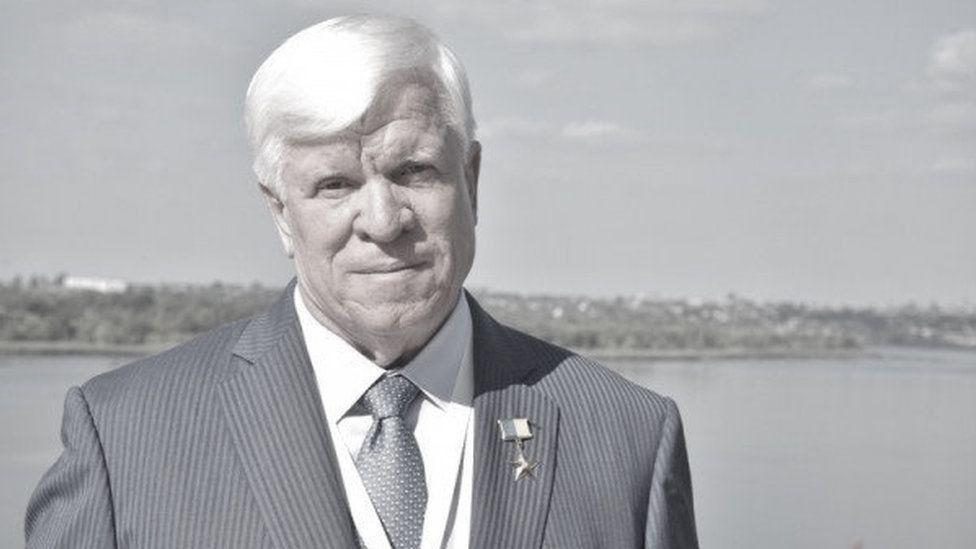
[8] McCool, Grant. “Counter-attack Leaves Russian Troops ‘Highly Vulnerable’ In Kherson: UK”. Smh.com, 28 Jul. 2022, https://www. smh.com.au/world/europe/counter-attack-leaves-russian-troops-highly-vulnerable-in-kherson-uk-20220728-p5b5hb.html.
A
LITTLE BIRDY TOLD ME:
How one of the world’s richest people plans to revitalise free speech on Twitter


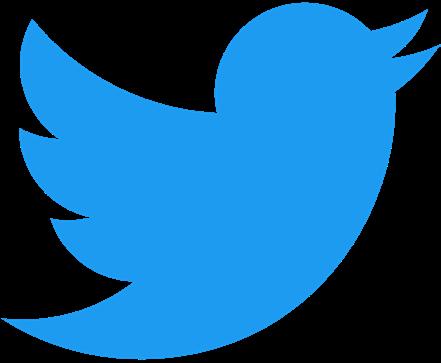
Home to the famous little blue bird who loves to provide users with their morning news, Twitter has become a platform so connected to the lives of its users. Through algorithms and preferences, the app tailors its experience to users’ interests whilst also providing a space to stay connected about trending topics, and not-so trending movements that saw former president Trump banned from the platform last year. However, it’s not often that Twitter itself is the subject of news stories, but on 25 April 2022, billionaire, Tesla CEO, and former SNL host, Elon Musk, struck a deal to purchase the company for USD $44 Billion.
The news of the Musk/Twitter deal triggered many alarm bells, most notably that a businessman like Musk can use his wealth to control a platform that advocates for free speech, especially considering that his range prior to the deal consisted of launching rockets and featuring in Rick and Morty episodes. Musk has also been updating his millions of followers of the deal’s progress on Twitter, using memes and gifs to undermine the seriousness of this deal and what it could mean for free speech around the world. But, just as quickly as the deal emerged, so too was it dissected, picked apart, and eventually abandoned, leaving Musk and Twitter battling over who should accept control of the mess that is Twitter.
No stranger to the Twitter landscape, Musk has been an active user on the platform since 2009, accumulating over 100 million followers from his projects such as SpaceX and Tesla. However, his motivations for purchasing Twitter seemed left field of what the public was used to seeing from Musk’s standard displays of wealth. His intentions were outlined in a TED talk: “[H]aving a public platform that is maximally trusted and broadly inclusive is extremely important to the future of civilization”. [1]
Furthermore, Musk states that by increasing trust in Twitter, civilizational risk is decreased, saying “I think it’s very important for there to be an inclusive arena for free speech”. The comparison to an arena contrasts the aim of Musk’s intention, as if he views Twitter as a game to be played rather than a platform that fosters free speech. The features Musk wishes to incorporate include editing tweets and showing history of edited tweets in an aim to avoid banning users. He previously spoke of Trump’s banishment as foolish and “flat out stupid”. [2]
Users expressed concern over Musk’s acquisition, suggesting it would encourage fascist themes of dictatorial power and cater towards Musk’s political alignments. For many who use Twitter as a source of news, Musk’s acquisition could see oppositional news outlets less available to users, potentially skewing public opinion on relevant issues and topics. One book discusses the matter of
INTERNATIONAL NEWS 16
INTERNATIONAL NEWS
Oleksiy Vadatursky, Image Source: BBC
17
Deputy Editor of Grapeshot, Jackson Robb, takes you through the Elon Musk-Twitter buy-out online saga.
social media privatisation further, suggesting that whilst platforms “enforce their own private rules … they have to do so while also dealing with the laws and courts of the places they operate in”. [3]
For the millions of Twitter users living outside of the US, Twitter’s policies under Musk could encourage destructive behaviour, with Australia being a key example of a nation that does not have specific protection of free speech in statute. Musk claims in the TED conversation that free speech exists “when someone you don’t like says something you don’t like” - and whilst there may be merit in this statement, his careless attitude towards the economics of Twitter, not just in the US, could be detrimental to current perceptions on free speech.
Whilst Musk controlling Twitter would raise serious concerns about authority and the distribution of media, these concerns were dismissed when new revelations emerged that Musk had doubts about his deal with Twitter and their inability to disclose information about how many bots were on the platform. The breakdown of the deal was ironically broadcast via Musk’s Twitter account, stating “My offer was based on Twitter’s SEC filings being accurate”, suggesting that because Twitter CEO refused to show proof, “this deal cannot move forward until he does”. [4] Musk continued his viral slander of the platform over the course of May, as bots pose a risk to Twitter as they are proven to generate and spread misinformation.
Twitter adopts bots to perform various services and claims less than 5% of its users are bots. However, the lack of transparency from Twitter executives has resulted in Musk’s retreat from the deal, a move Twitter suggests is Musk looking for an opportunity to back out. Musk and Twitter both agreed to a one-billion-dollar payout if either party reversed the terms of the agreement, an arrangement that will now be discussed in court as Twitter filed a lawsuit against Musk in July for breach of contract. [5]
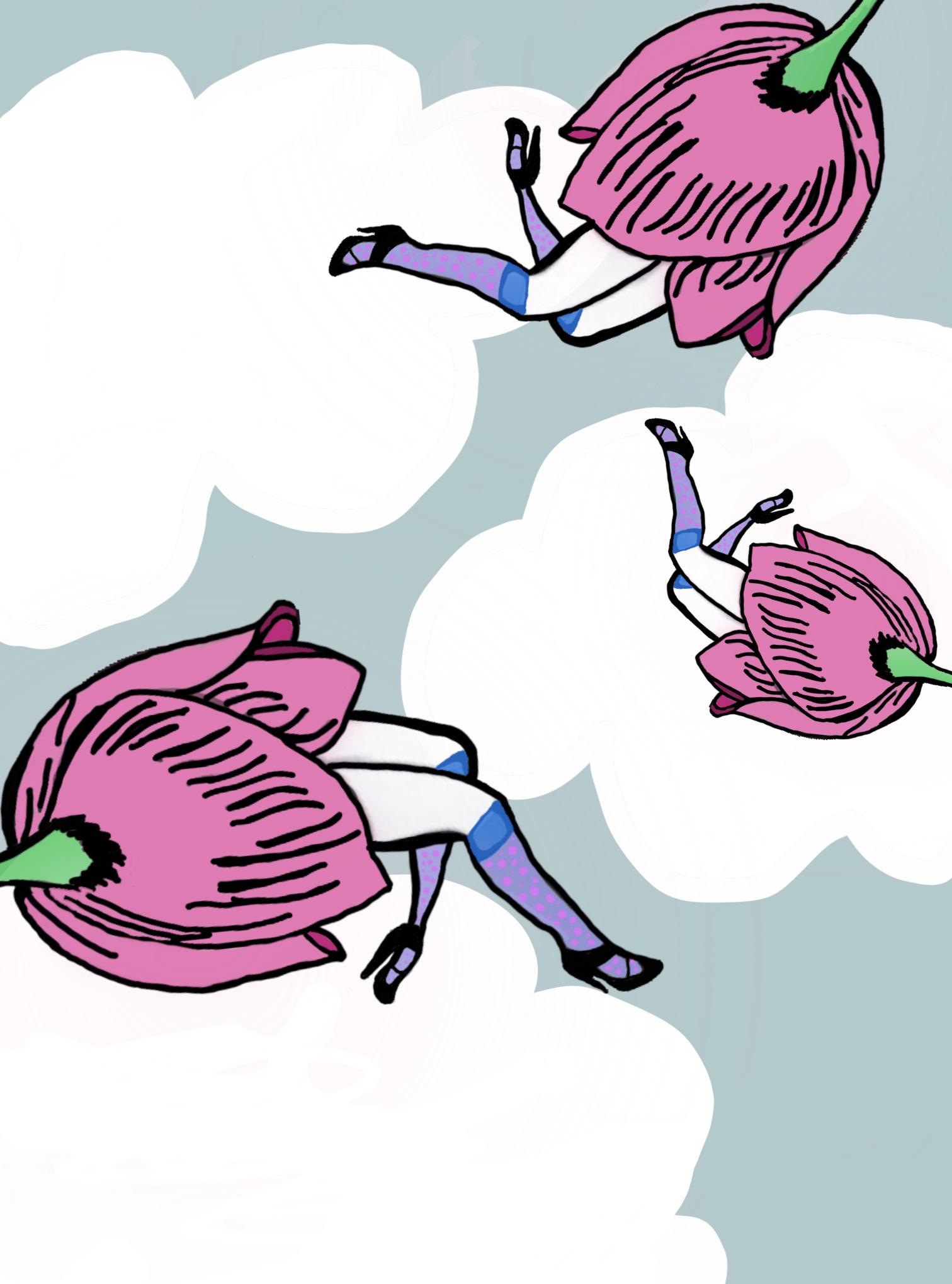



Musk’s lawyers wrote in a filing to the Security and Exchange Commission that “Mr. Musk has provided numerous additional follow-up requests” regarding the gaps in information relating to the bots, only to be met with “incomplete data that was not sufficient to perform such an independent assessment”. [6]
Musk claims Twitter has breached the terms of their contract by not providing all necessary data and thus has grounds to retreat from the deal. Within a week of Musk’s exit from the deal, Twitter announced they would sue and hold Musk accountable to “his contractual obligations”. Over the coming months, the Musk/Twitter deal will take new forms as the inner workings of Twitter will be revealed as subpoenas begin to be sent. In most recent news, Musk countersued Twitter, with details not yet available to the public. [7]
With a trial set for October 24, Musk and Twitter will both appeal their side of the deal, as the rest of us log in and summarise our thoughts in 140 characters.
by Jackson Robb
[1] Youtube.Com, 2022, https://www.youtube.com/watch?v=cdZZpaB2kDM&t=1658s&ab_channel=TED.
[2] Staff, Al. “Elon Musk Says He Would Lift Trump’S Twitter Ban”. Aljazeera.Com, 2022, https://www.aljazeera.com/ news/2022/5/10/elon-musk-says-he-would-lift-trump-twitter-ban.
[3] Corredoira y Alfonso, Loreto et al. The Handbook Of Communication Rights, Law, And Ethics.
[4] 2022, https://twitter.com/elonmusk?ref_src=twsrc%5Egoogle%7Ctwcamp%5Eserp%7Ctwgr%5Eauthor.
[5] Hirsch, Lauren. “Elon Musk’S Deal For Twitter Includes A $1 Billion Breakup Fee.”. Nytimes.Com, 2022, https://www. nytimes.com/2022/04/26/technology/twitter-musk-breakup-fee.html.
[6] www.sec.gov/Archives/edgar/data/0001494730/000110465922078413/tm2220599d1_ex99-p.htm
[7] “Elon Musk Countersues Twitter Over $44Bn Deal Amid Fresh Legal Action By Shareholder”. The Guardian, 2022, https://www.theguardian.com/technology/2022/jul/30/elon-musk-countersues-twitter-44bn.
REGULARS
INTERNATIONAL NEWS 18
ARTIST
Tom Rosenthal
Nathan Evans
Princess Nokia
The Oh Hellos
Hozier
Aurora
Juniper Vale
Jacob Collier
Audrey Hepburn
Chasing Grace
grentperez
Taylor Swift
The Lumineers
Mandy Moore
A GRAPEY PLAYLIST: SONG TITLE
Away with the Fairies
Wellerman (Sea Shanty)


Dragons
CHALLENGE: T he Reckoning of Conventionality: Taylor Swift’s ‘ Folklore ’
Gang of Youths
Harry Styles
Soldier, Poet, King
In The Woods Somewhere Soft Universe Fractions
With The Love In My Heart
Moon River
Hercules
Cherry Wine
August
Ophelia
Healing Incantation
Achilles Come Down Sweet Creature
Taylor Swift. A rare pop phenomena. Transitioning from country roots to mainstream music, this star has transcended genres. In the present-day, she stands as a standard of multiple genres, messily crafting and reckoning with her own conventionality. Reflecting back on her distinctive palettes of the bright and bubbly 2019’s Lover to the heavily electronic production of 2017’s Reputation, Swift’s career has been a storied, decade-long narrative. One that delicately traces the trials and tribulations of romance and professional life. 2020’s Folklore introduced a new chapter to Swift’s narrative. A confessional masterpiece, it focuses on the fallout from the high of summer, a star reflecting back on the journey she’s traversed. As mentioned on one Instagram post, Folklore is spun from Swift’s imagination, an amalgamation of stories to be passed down just like folk tales.
Winding back to the summer of 2020, the schedule of festivals, ‘lover-fest’, and an international tour fell into the common tribulation of a global pandemic. With these plans scrapped, Swift was left with bountiful spare time. No longer restricted to rehearsals or performing around the globe, the results of an unforeseen isolation led to Swift’s endless hours of writing Folklore. The surprise release became a stark and uncharacteristic change to her usual deliberate and calculated release schedules. These tactics compliment the changed musical direction for Swift, a glimpse into this new world of folktales.
Over the course of seven albums, the world has seen Swift evolve from a young fresh-faced country girl to a sleek shiny pop star. Now in her eighth iteration… I wanted to dive head-first into the world of folk, alternative rock and indie music. For this challenge (and it wasn’t hard), I spent time revisiting my top five favourite songs in Folklore
1. the 1
“In my defence, I have none For never leaving well enough alone But it would’ve been fun If you would’ve been the one”
A wistful beginning to Folklore, “the 1” brings us to a palace of yearning. The pivotal relationship in the ‘roaring twenties’ that could have been the one. Reminiscing through an older and mature lens, the song’s powerful yet delicate one-liners evoke moments of longing and regret. “the 1” brings back that painful ping of nostalgia, the age-old question ‘what would have been’ if that relationship worked out.
02 cardigan
“And when I felt like I was an old cardigan Under someone’s bed You put me on and said I was your favourite”
Breathy and forlorn over the soft drumbeats and delicate piano keys, “cardigan” brings a magical, glittery quality to the album. A guide through enchanted forests, a lifeline in the turbulent ocean. It is low and thoughtful, a nod to how music has always been there, no matter what life threw at her.
06 mirrorball
“Hush, when no one is around, my dear You’ll find me on my tallest tiptoes Spinning in my highest heels, love Shining just for you”
A dazzling haze, “mirrorball” is a shimmering tune of intimacy between Swift and her audience. This sparkling tune of vulnerability is Taylor’s true reckoning
REGULARS
20 REGULARS
21 FABLED EDITION
of conventionality, a confessional piece. Turning her suffering into art, she cries for the ordinary urge to be loved.
08 august

“But I can see us lost in the memory August slipped away into a moment in time
‘Cause it was never mine And I can see us twisted in bedsheets August slipped away like a bottle of wine”
It’s the delicate details that truly capture the essence of Swift in this album. “august” as the eighth track of the record is such a neat detail. The ephemeral quality of a summer fling, it starts off full of promise that it could be something but disintegrates before you know it.
What makes Folklore such a shimmering gem in Swift’s discography is the vivid and confessional storytelling. The sincere words that string together like poetry revealing her yearn for self-reflection, growth and adaptation. The level of maturity and growth presented in Folklore compliments its longevity and timelessness. This reckoning of conventionally is what truly captivates Swift as the authentic artist of the decade.
by Lauren Knezevic
ENCHANTED
In 2007, Kevin Lima’s Enchanted was released, a combined live-action/animated princess musical. That in itself should be everything you need to know about this film to watch it.
09 this is me trying
“They told me all of my cages were mental So I got wasted like all my potential And my words shoot to kill when I’m mad I have a lot of regrets about that”
This song has the sharpest and most absorbing premise on the entire record. Its emotional core is palpable, realistically complex, and truly moving. It is a dreamy and remorsal track, coping with failures, where Swift seeks forgiveness, reiterating that she is really trying.
POP CULTURE REWIND
The movie begins in animated Andalasia, where evil Queen Narissa (Susan Sarandon) schemes to protect her right to the throne by ensuring her stepson, Prince Edward, does not get married. While hunting for trolls in the forest, Edward (James Marsden), hears Giselle’s (Amy Adams) sweet voice singing from her tree house. The two instantly fall in love; the wedding is planned. Stubborn and enslaved by greed, the evil queen exiles Giselle through a magical portal to live-action Times Square. Homeless and scared, she sets out to find her true love.

The genius of Enchanted is its witty, self-deprecating style meshed with its contemporary homage to the genre of Fairy Tale. This genius can be admired best through its songs. There are three in particular which stand out.


While still in Andalasia, Giselle sings “True Love’s Kiss”. She begins the ballad while in her tree house, surrounded by adorable forest animals like bunnies, blue birds, a raccoon, a tortoise, and deer. She longingly adores a mannequin which she has made herself, male and anonymous. It has sapphires for eyes and flowers for ears: a romantic, perfect, princely vision. But no lips. She calls for more forest animals to seek out the perfect set of lips. She tries a pea pod, a comb, a crab, and a wormy apple, but none of them are perfect. This animated vision is not her true love. Does she need a male voice in her life? Already in this song, a seed is planted which rejects traditional archetype agendas: a magical, princely kiss is not all Giselle has to live for.
Another song that captures the wit of Enchanted is the “Happy Working Song.” By thrusting a Disney princess into the “real”
world, the movie puts the morals and ethics of the infamous role to the test. Finding herself in Robert’s (Patrick Dempsey) dirty New York apartment, she summons the vermin of New York to help her clean it. The song satirically mirrors “True Love’s Kiss”; animals infest the apartment to help Giselle clean it. Cockroaches scurry from the bathtub drain and wipe away the mildew, pigeons swipe crumbs from the table with their feathers, rats scrub the toilet with toothbrushes, flies ring out a dirty rag. The juxtaposition of “filthy” animals helping a princess clean an apartment creates a sense of real-world humility and empathy that is often impossible to render in traditional fairy tales.
But it is the performance of “That’s How You Know” which truly reinvents the fairy tale genre. In Central Park, Giselle breaks out into song a cappella (a classic princess move) and is accompanied by an impromptu and diverse ensemble of Reggae street performers, a mariachi band, breakdancers, blue-collar workers, and cyclists (who stampede over Prince Edward). Giselle parades around in a dress made out of curtains, revealing a resourcefulness which embraces NY life. All the while, Dempsey, in his corporate suit and cardboard-looking face, trails behind her, proclaiming “I don’t dance. And I really don’t sing.” The mundanity of Robert’s character subverts the princely trope, and as Giselle sings from Rapunzel’s tower on the set of a play, the movie meta-theatrically rejects traditional fairy tale expectations of love at first sight. The ensemble comes together to join Giselle in her celebration of real love, not true love.
Of course, Giselle finds her happy ever after in New York - not with Edward despite his desperate search to find her, but with Robert, the movie’s title becoming less about fairy tales and more about the every-day lives we lead.
This November, the sequel, titled Disenchanted, will be released. Adams, Dempsey, and Marsden will return to the live action/animated universe. The movie is set fifteen years after Giselle’s happy ever after with Robert. After moving to suburbia and feeling threatened by the community’s overseer, Giselle wishes their lives were a perfect fairy tale. The spell backfires, and the family gets sent to Andalasia.
For all the suburbians out there who felt left out by Enchanted, don’t fear! Your lives are enchanting, too.
by Bruna Gomes
REGULARS 23 22
REGULARS
YOU ARE HERE: PENRITH ARE YOU THE CROW?
“Hey, Mika, at school today, my teacher told me a story after lunch. And, you shouldn’t be the crow or the Peacock.”
Confused with how out of context it was, a chuckle escaped my mouth once I heard my brother say those words. Eating at a Vietnamese Restaurant, my brother’s mouth is stuffed with spring rolls. He asked, “Are you the crow?”.
I’ve heard of this story before..back when in primary school. It was about a crow who wishes to be as colourful as other birds. The crow then talked to the parrot, who said that the peacock was the most beautiful. But, then the peacock told the crow that he was lucky because the crow was not caged, like it was, because of its colours.
Though I vaguely remember the story at the time, I started thinking about where I came from. I started to think how this resonated with my then conflicting thoughts with Penrith.
Penrith. Located further in Greater Western Sydney. A suburb somehow mixed with parcels of empty land, yet, surrounded by a community of buildings. A place where I’ve lived for most of my life.
When people hear that I come from Penrith, I almost always get on the following responses:
“Penrith? That’s a trek.”
“Oh you live in Penrith? First of all, how are you bothered?”
“You’re so far away from everyone… have you considered moving closer to the city?”
While hearing these comments has briefly entertained me, when I hear that word, ‘Penrith’, instantly, there’s a familiar warm feeling of comfort inside.
But it took me a while to accept that Penrith was my home. I used to think Penrith was boring and wanted to live near the city. The sensory overload that came with walking into Zara, Muji, Abbey’s Bookshop, and the constant moving in the winding streets, made me believe that the comfort I had wanted to name home was there. I believed there was nothing that the city lacked and it could fulfil all my needs.
I enjoyed the city life, shopped at a wider range of stores, hung out with my friends at the last minute, and never worried about catching public transport late at night by myself.
And for that, I resented living in Penrith. The random blocks of buildings and the smaller shopping centres, compared to the City Squalor, made Penrith lack in excitement. I always thought living in the city fulfils that adrenaline of adventure that I craved. I felt that I was missing out on the action.
“So are you the crow?” My brother asked once again. I stared at him. These memories of living here
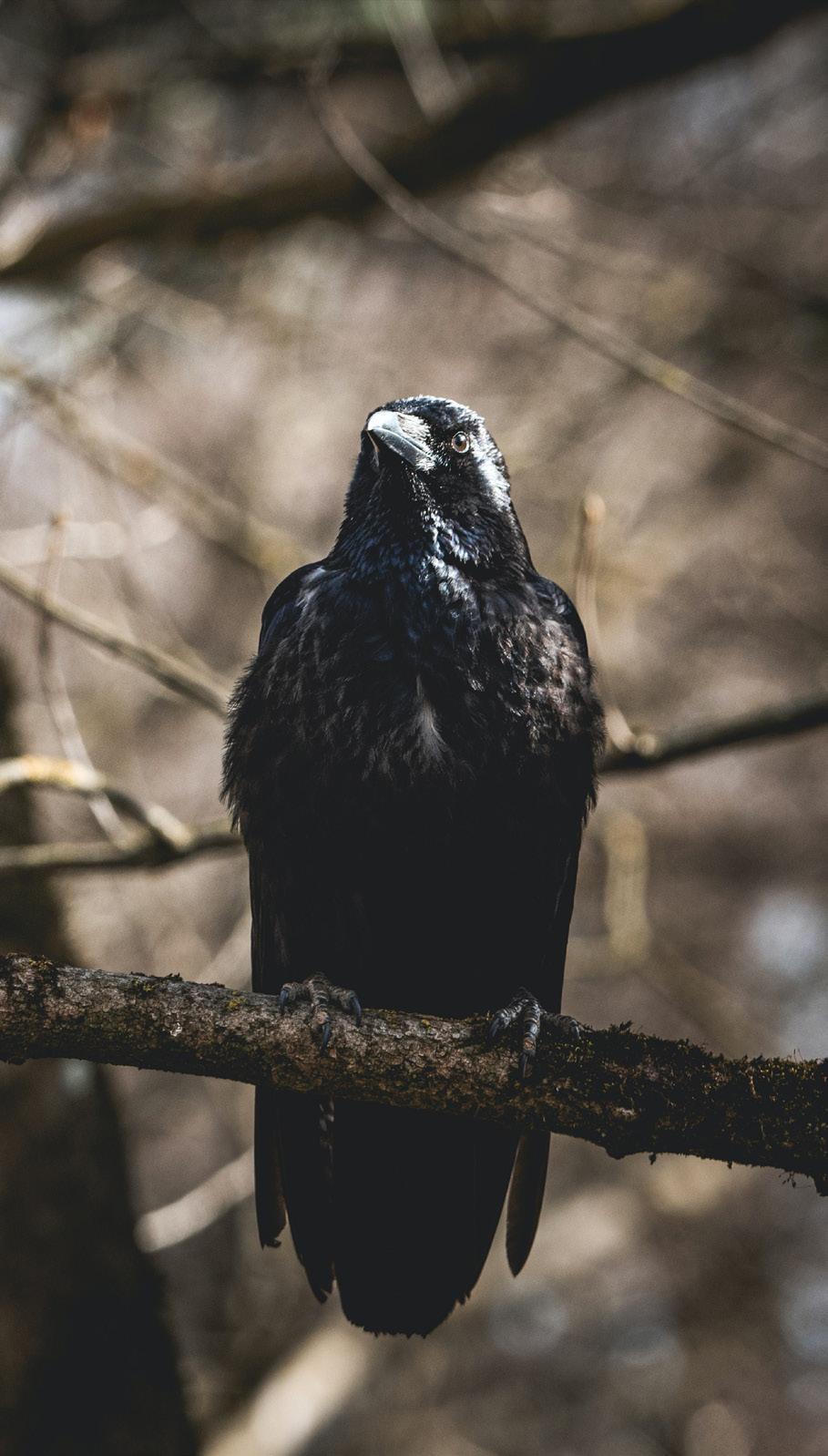
came over me. It felt like everything had slowed, and time had paused in the moment. My brother, who asked a simple question (that I could have said yes or no to, because like any other six year old, he talks about the next random thing after I answer. He could even forget what I said) perplexed me.
I realised how little I had paid attention to this suburb. It was an attractive territory that I was blind to.
Having lunch with my family at Jamison Bakery, where the aroma of Bahn mi was a gentle message to my soul. The Aqua Golf, where memories of my friends and I were undoubtedly consistent in missing the targets in front of us. Walking on Yandhai Nepean Crossing, observing the view whenever I would reach the middle of the bridge. The parks that seemed to be in every corner of every suburb. Thinking of these brought a deep feeling of longing that made my heart ache and pound like a drum inside my chest. It was then that I accepted Penrith was where I felt the most satisfied, the most content.
Of course, the prospect of going to the city exhilarates me. But, the fast-paced life, with almost everything I could imagine, did not completely replace the confidence that I had to call Penrith my home; a home that included the pieces of family, memories and community. Penrith was my heart’s home.
My brother, now grunting that I took long to answer, was finally relieved that I responded, “No.”
“Why?”
“I’ve accepted where we live will always be my home.”
Indeed, it is a home, and home is the freedom and pride that comes with living here.
by Mikaela Mariano
REGULARS 24
REGULARS
25
NEWS REPORT
Macquarie University Provides Inadequate Support as Students Return to Face-to-face Group Learning
Watch the report on Grapeshot’s website here:
FEATURES
The views expressed by the author are not those of the publisher. This piece was written and created by an independent student journalist. Grapeshot reached out to the university for comment, and their response has been published on our website via the QR code.

Media student Donya Amadi produced a report interviewing MQ current students to reveal the university’s lack of support as they forced students to transition back to on-campus learning after two years of individualised learning and isolation.
Transcript:
Students at Macquarie University have reported that current university policies fail to respond to supporting students’ mental health challenges, as face-toface learning resumes during semester one, following almost two years of online learning due to New South Wales COVID-19 lockdown measures.
A report by the University of Sydney has found that lockdowns have “disrupted social relationships” and led to feelings of “loneliness, disconnection and anxiety” amongst students.
[2]
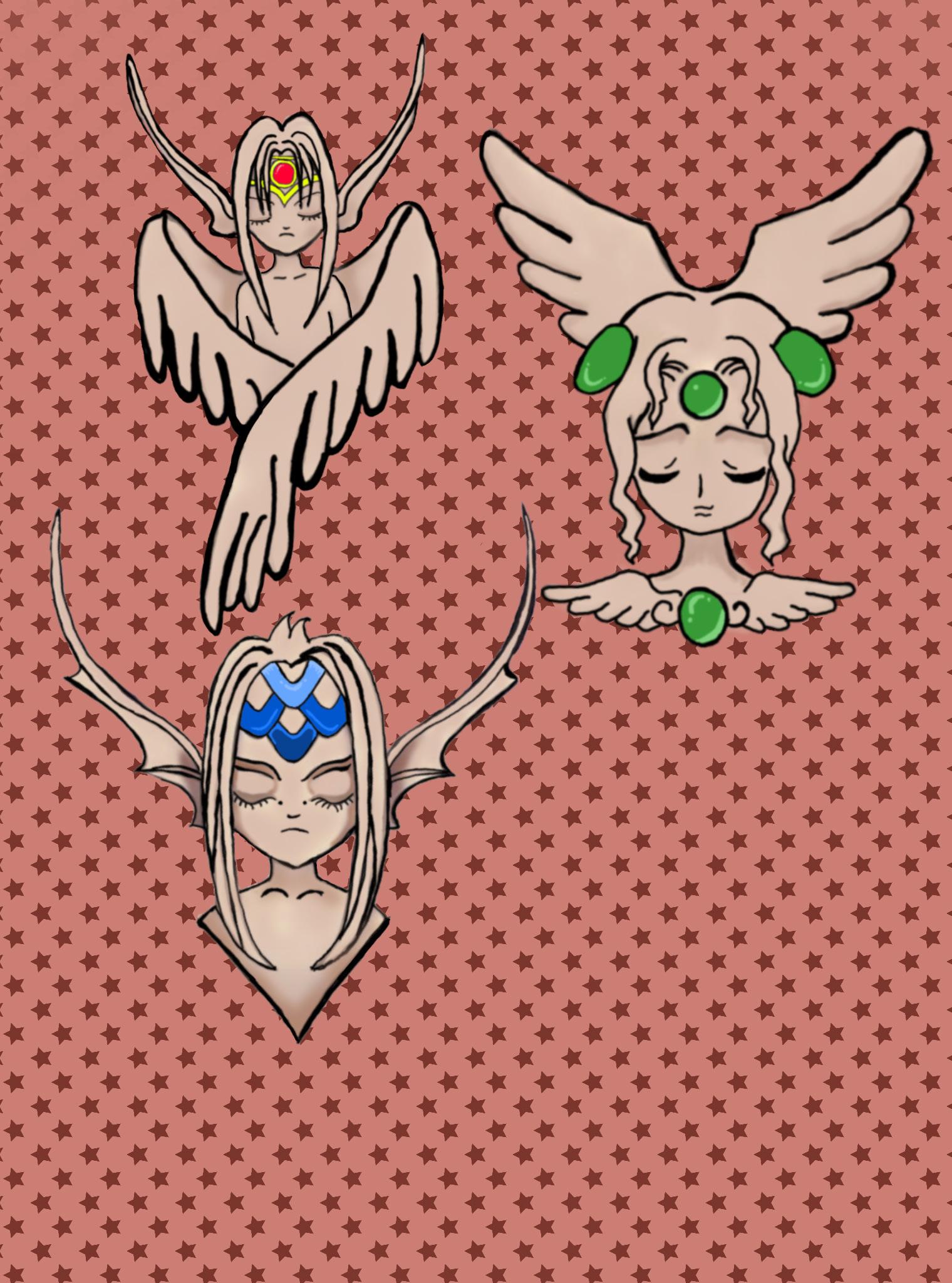
“It’s been quite confronting returning to classes on campus and interacting in large groups after such a long time. I don’t think the Uni acknowledges how difficult this transition has been
for students’ mental health.” [3]
Macquarie University currently offers six free, confidential counselling sessions annually with a student well-being psychologist to support students’ social and emotional needs. [4]
77% of young people reported a decline in their mental health since the COVID-19 outbreak. [5] The Australian Government provided an additional $12.25 million of funding in July 2021 to ensure people in New South Wales can access additional mental health support during such difficult times. [6]
The arrival of the COVID-19 pandemic shifted university teaching online as New South Wales went in and out of lockdowns and deemed on-campus learning ‘unsafe’ as positive case numbers increased daily.
COVID-19 case numbers have been trending slightly lower in New South Wales, with 11,939 new cases reported by 4 pm on Wednesday. [7]
Donya Amadi reporting for MQTV news from isolation.
by Donya Amadi
[1] Wilson, G. I. (2005). Screening for social anxiety disorder in first year university students: a pilot study. Australian Family Physician, 34(11), 983-984. https://hekyll.services.adelaide.edu.au/dspace/bitstream/2440/17216/1/hdl_17216.pdf
[2] Bower, M., Smout, S., Ellsmore, S., Donohoe-Bales, A.,, Sivaprakash P.P., Lim, C., Gray, M., Francis, A., Richer, J., & Australia’s Mental Health Think Tank. (2021). COVID-19 and Australia’s mental health: An overview of academic literature, policy documents, lived experience accounts, media and community reports. Australia’s Mental Health Think Tank. https://mentalhealththinktank.org.au/wp-content/uploads/2021/10/AustraliasMentalHealthThinkTank-EvidenceSummary-COVID-MentalHealth.pdf.
[3] S. Kafle, personal communication, (May 3, 2022).
[4] Macquarie University (2022, May 4). Confidential counselling for students. https://students.mq.edu.au/support/personal/counselling.
[5] Headspace. (2020). Coping with COVID: the mental health impact on young people accessing headspace services. https://headspace.org.au/assets/ Uploads/COVID-Client-Impact-Report-FINAL-11-8-20.pdf.
[6] Minister for Health and Aged Care. (2021, July 14). COVID-19 Mental Health Boost for New South Wales [Press release]. https://www.health.gov.au/ ministers/the-hon-greg-hunt-mp/media/covid-19-mental-health-boost-for-new-south-wales.
[7] NSW Health. (2022, May 4). COVID-19 (Coronavirus). https://www.health.nsw.gov.au/Infectious/covid-19/Pages/default.aspx.
NOTE: Video of student on laptop and COVID testing was retrieved from Shutterstock. All other content was created myself.
URL: https://echo360.net.au/media/e092a426-367f-48a9-b528-268f1897e5fa/public
FEATURES
27
There’s a Jinn in My Bathroom
Jinns are everywhere, as Nilab Siddiqi explains, and she is terrified of them. Why is she being haunted? Read on to find out more about this interesting aspect of Islamic folklore.
There are jinns in my bathroom and they scare me half to death.
It is 11:30pm. I’m tucked into bed, the lights are off and the melatonin pill I downed is leeching away at my consciousness when all of a sudden it hits me. I need to pee. While not a daunting bodily sensation to most, for me, using the bathroom after everyone has fallen asleep is quite possibly my worst nightmare.
You see, my bathroom is haunted. Well…not haunted, more so possibly inhabited?
According to Islamic belief, our world is not only host to human beings but jinns as well. Jinns are creatures made of smokeless fire, invisible to the naked human eye and just as capable of good and evil as us. They are also capable of many things humans are not, such as meddling with the world around us without us humans ever (ever!) seeing them. Based on the Islamic tradition, jinns can do good or do harm, including possible harm to humans. But if you are relying on Afghan cultural norms, jinns are creatures which can, and will, push frames off their hooks, slam your doors, move your spectacles and generally cause mayhem.
Many cultures where Islam is the predominant religion use jinns in their lore. The first ever encounter I personally had with the lore surrounding Jinns was through one of the many thrilling tales told to me as a child. A hazy recollection of the tale recounts that a mischievous jinn in rural Afghanistan- where they are found aplenty- would bring a beautiful young girl golden trinkets consistently, as a token of their affection. While that may sound sweet, I would rather not have an invisible being following me around and giving me gifts. As I grew, however, I came to know more and more about the complex nature of jinns.
Now do not get me wrong, not all jinn are bad. They’re actually very similar to humans, except for the fact that they are made from smokeless fire and have amazing abilities. They have free will, like humans, and are, therefore, accountable for their actions before God. This free will means that there are ill-intentioned jinns, just like humans, although many jinn are harmless. There are actually many categories of jinn but that is beyond the scope of this story; we’re concerned with the unbelieving and ill-intentioned category. The types of jinn which tend to lurk in dirty places, including bathrooms, which brings me back to my original point. There are (probably!) jinns in my bathroom and they scare me half to death.
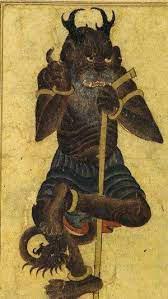
While regular Aussie kids were scared of the Boogie Man and Bloody Mary appearing in their mirror at night, I was, and still am, terrified of jinns meddling with me in the bathroom. If I close my eyes to wash my face, will a jinn be staring back at me in the mirror when I open them? If I turn to face a wall in my shower, will a jinn be waiting for me when I turn the other way? Realistically, I know these things won’t happen as jinns are invisible to the human eye. What I should be scared of is a jinn possession while I’m taking a wazz, but it’s hard to be rational when you’ve been raised on purposefully terrifying stories.
I will reluctantly admit that I naturally scare easier than others, but I truly believe that anyone fed as many scary tales about the dark would be just as frightened as me. One recollection summons the insane stammer of my stressed heart as a young girl in a dark cabin park in Wollongong. My older cousins had just finished excitedly telling me they had seen a wretched jinn peering out at them from the inside of a parked car. Until this day, I turn my eyes away from the inside of cars when it’s dark out, even though I know jinns don’t appear to us in frightful, ghostlike forms. If a jinn did reveal itself to us, it would only really be in the form of a creature and, well, what is really so frightening about seeing a stray goose, dog or snake in a car? Chances are my cousins simply concocted the tale to scare me, and it worked.
There are a variety of strict rules to follow when using the bathroom to avoid jinns causing trouble. And by trouble, I mean possession. No singing, talking, crying or reciting in the bathroom. All seemingly simple rules. But when you’re an abnormally stressed 21-year-old who has a bladder the size of a pistachio, all of these rules will fly right out of your mind if you’re not careful. Especially that rule about crying in the bathroom.
This fear of jinns in bathrooms isn’t only restricted to my own bathroom but to all bathrooms, even the public kind, especially the public kind. If anything, I’m more scared of public bathrooms than my own. If evil jinns fester in dirty places, then they would surely have an absolute ball in public bathrooms. How truly horrible it would be to be possessed in a dank public bathroom.
I know I am painting a rather bleak picture here but, in fact, there is a dua, a type of supplication, provided to us to recite before entering a bathroom, which will protect us from the eyes and mischief of evil bathroom Jinns. Although, in my pre-bathroom anxiety, I almost always forget to recite it and instead just speed up my bathroom proceedings to an almost impossible pace in order to avoid any supernatural meddling.
So now you see why my need to pee at night is such a scary prospect. Who knew such a natural need posed such chaotic risks?
I open my eyes and ponder my options. I can either tip-toe down the hall to the bathroom, recite my dua and anxiously relieve myself, or I could close my eyes, pretend like I’m not in deep pain and hope I eventually fall asleep…
Frankly, it’s not a hard choice to make. I turn to my side and silently apologise to my bladder.
The jinns win tonight. by Nilab Sadiqi
28 29 FEATURES FEATURES
KURENTOVANJE A Monstrous Call to Spring
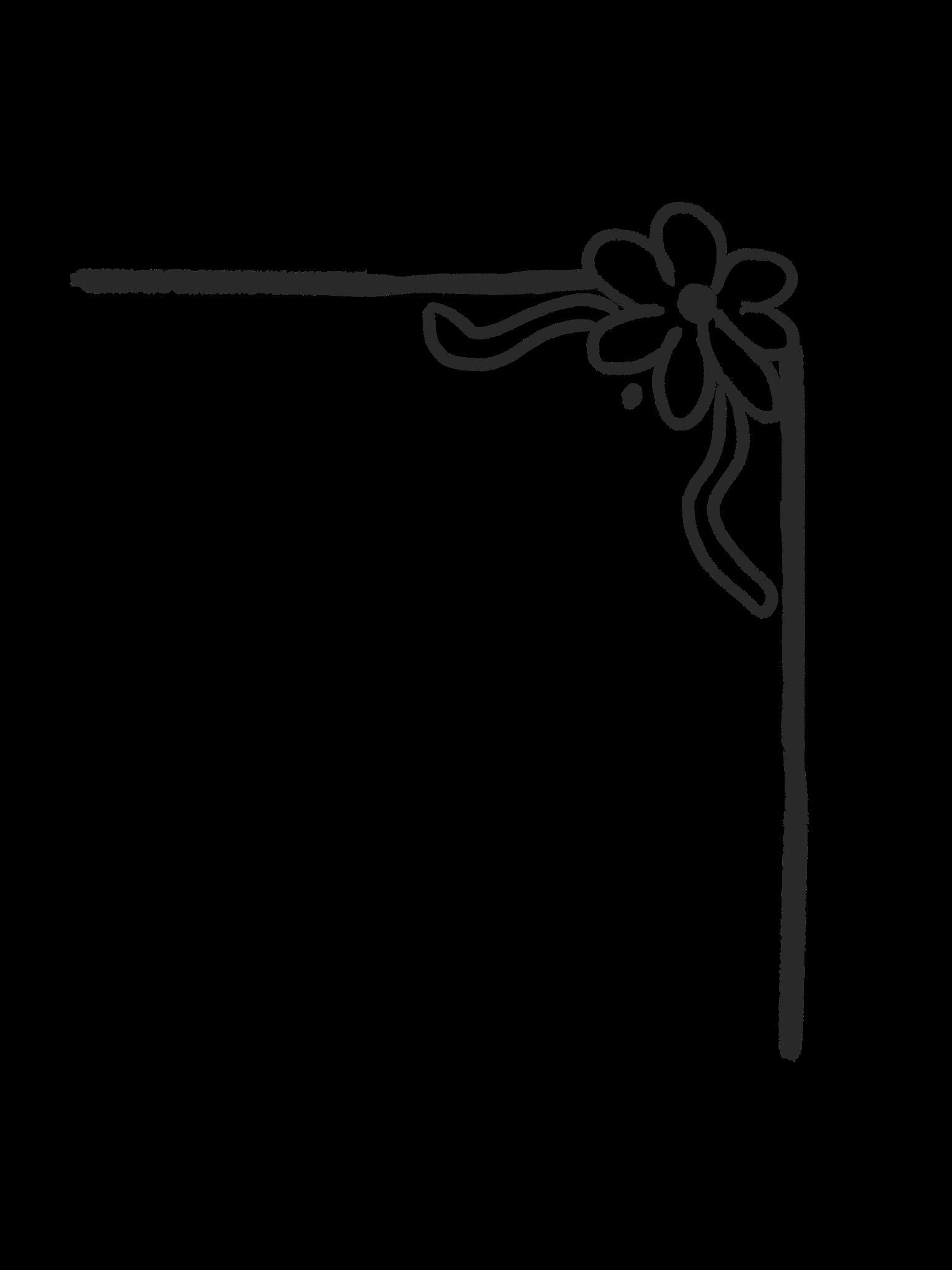
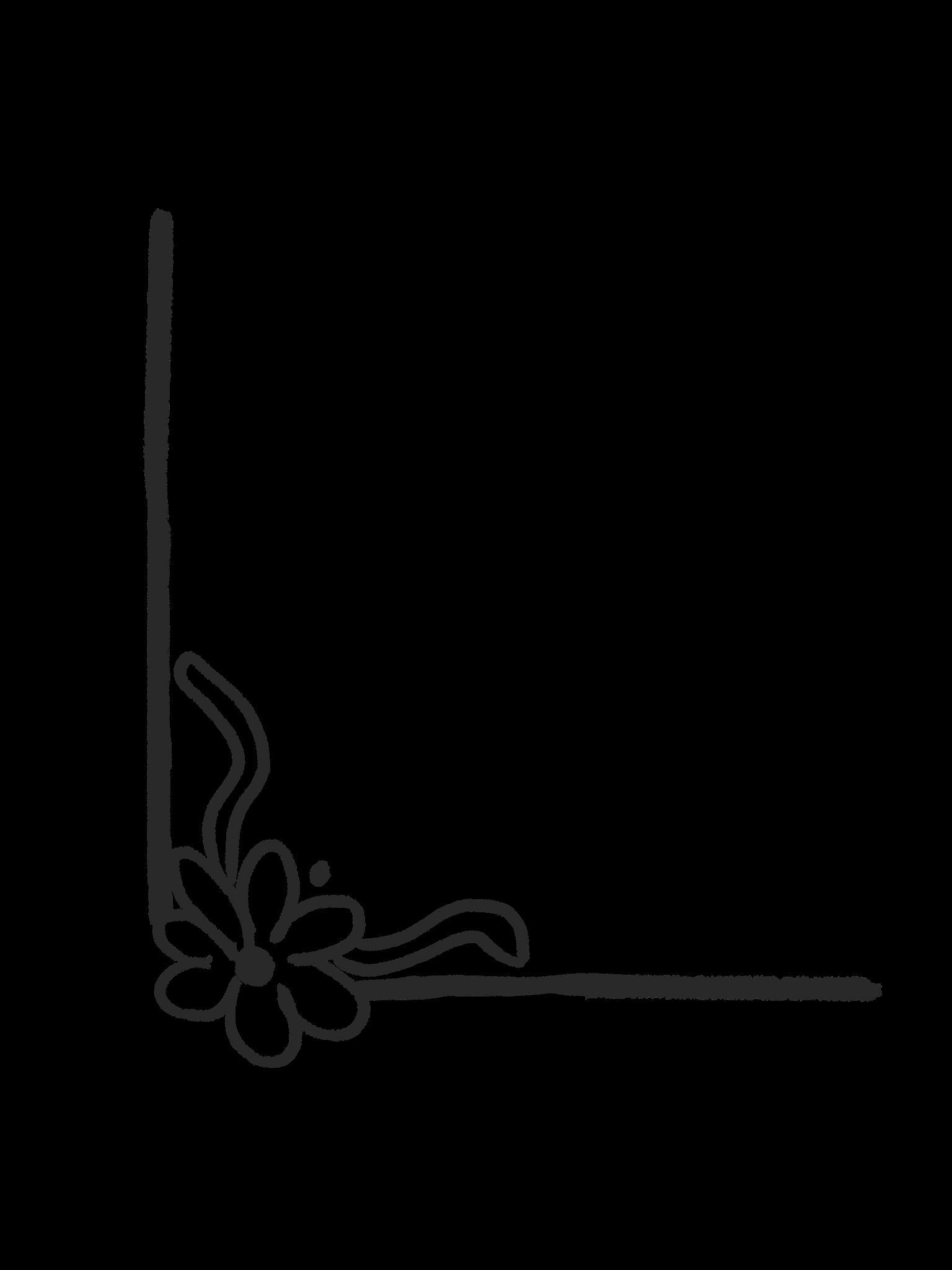
Huddling indoors in my ridiculously oversized Oodie knock-off, my mind keeps drifting to the fruitful promises of spring. If only I could chase away the blues of winter and our never-ending rain bomb with a few monstrous cries like Kurentovanje.
Growing up with Slovenian heritage, I was always drawn to the strange and other-worldly pagan history in a predominantly Christian country. Within the fairy-tale landscape of this forgotten country lies rich Slavic culture built on 8th-century pre-Christianity traditions.
is a celebration I have not had the pleasure of yet seeing in person, but my parents are strangely reminiscent of its loud ringing cattle bells and woolly fur suits. This February festival takes place in Ptuj (Slovenia’s oldest town) where citizens are encouraged to dress in sheepskin
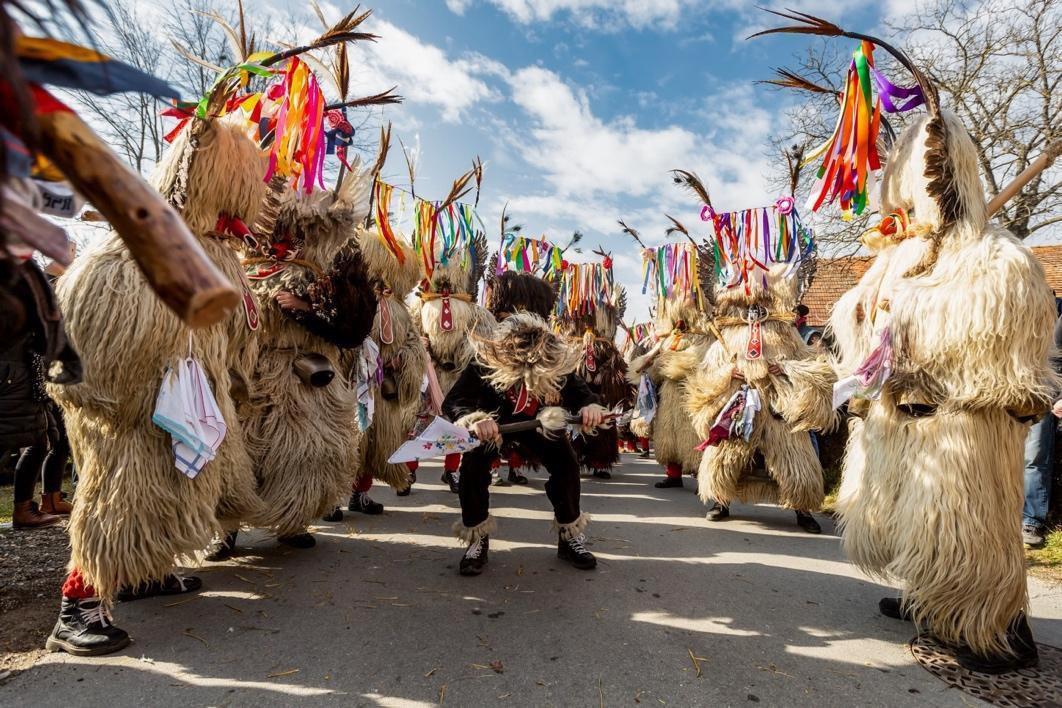
Kurent. Kurent is a God not for the faint-hearted, known as the god of hedonism (think of Dionysus, but Slavic). His monstrous sheep-skin costuming is embraced by the local’s handmade masks that aim to scare away the lingering remnants of winter. This pagan tradition between Candlemas and Ash Wednesday also brings forth the upcoming light half of the year. Beginning in 1960, only young men wore the costumes of ‘Kurents’ where the pack was often led by the devil. Nowadays this lively spring celebration can be celebrated by all as it promises a good harvest and an abun-
This festival has been compared to Mardi Gras due to the colourful folk characters, but I believe this label does not give justice to the traditional food and folk music encompassing locals in a week-long celebration of life. Whilst the Kurent makes an appearance, other lively and bizarre characters such as Baba Nosi Deda (An old woman carrying her man) bring forth fertility and the Cigani (Travellers) add merriment to the floats. I’ve certainly never seen such attention to detail and a strong folk tradition with any costume pa rade like Kurentovanje, where local Slovenians are proud to embrace their strangely beautiful traditions.
Everyone is invited and welcomed to participate through the Shrovetide custom of door-knocking by the folk characters. Recognised as a UNESCO custom, door-knocking in this case is actually desired as the circle each home and ring cow bells covered with bright ribbons to bring luck to the owners. Just watch the devil in bright overalls with the net slung lazily over his back, your soul just might be captured if you underestimate his clev er sheepskin mask. I can’t imagine anyone could be seduced under a smelly sheep-skin costume but as they say, watch those dressed in sheep’s clothing.
Kurentovanje is the only celebration I can think of where I’d enjoy rowdy locals in my front yard, although I’ve heard the Devil likes to pinch a kransky or two.
by Sophie Poredos
30 31 FEATURES FEATURES
Source: Aleš Kravos 2019
Editorial Assistant Sophie Poredos takes you through a cultural celebration that is central to her Slovenian heritage.
CARVED FROM MARBLE
MALE BODY STANDARDS AND THE MYTH OF ADONIS
One of the persisting legends that wove its way through Ancient Greek civilization and their way of life was Aphrodites’s lover, Adonis. So magnificent in his beauty that he courted the affections of Apollo, Heracles and Dionysus, he was cruelly slain by a boar while hunting and was honoured through an annual festival and centuries of artistic depictions of his physical form. However, the classical image of Adonis and many other mythical depictions of idealised beauty has laid the groundwork for one of the most surprising issues facing young men in modern society - body dysmorphia. What is Body Dysmorphia, and how do we combat it?
Body Dysmorphia is defined by the Anxiety and Depression Association of America as “a body-image disorder characterised by persistent and intrusive preoccupations with an imagined or a slight defect in one appearance”. The condition can make one overly focused on a single aspect of their body, such as their nose, skin or stomach, but it can also relate to one’s relationship with their entire body. Despite affecting around 1 in 50 Australians, it is a condition that is extraordinarily difficult to diagnose, as many who suffer from it do not feel they are suffering from a delusion.
If left untreated, Body Dysmorphia can lead to eating disorders, anxiety, depression and in extreme cases, high rates of suicidal thoughts. However, part of the difficulty with Body Dysmorphia is the medical and societal perception of it as a “female condition”. We have been conditioned to consider disorders like bulimia
and anorexia through the narrow lens of teenage girls and Instagram models. In 2000, Dr Harrison G. Pope published his landmark work The Adonis Complex (2000), revealing that body image concerns not only affect women, but have now affected an entirely new and previously unaffected group: young men.
The titular “Adonis Complex” – which Pope clarifies is not a psychological term – asserts that “[The Adonis Complex]… is created by biological and psychological forces that combine with modern society’s and the media’s powerful and unrealistic messages emphasising an ever-more-muscular, ever-more-fit, and often-unattainable male body ideal”. Pope asserts that while it is important for young men to eat a healthy diet, groom themselves and have a desire to look their best; the societal pressure to push past the boundaries of health can have a “devastating impact on emotional and physical development in the young, and on well-being for men of all ages”.
This complex is compounded when we consider how rapidly the internet has changed since 2000. The “Wild West” era of the Internet has long since passed for a more curated and highly profitable machine. Now, young men searching for a way to feel better about their bodies are bombarded with social media feeds that continuously promote influencers with unrealistic body types. These influencers often portray their image as the result of hard work and a clean, controlled diet, promoting the idea that if you work hard enough, you can achieve the
progress behind protein shakes, workout plans and secret dieting tips. As someone who has struggled with my weight, it’s easy to be won over by the siren song of people you admire for their knowledge and dedication to their bodies. Often what is conveniently ignored by these influencers, and entirely hidden from the passive viewer is the real secret behind their performanceanabolic steroids.
Users and proponents of anabolic steroids draw their arguments clearly and simply. There are scientifically proven benefits to steroids alongside scientifically proven harmful effects. It is up to the individual to investigate and ultimately make the choice themselves if they wish to partake in steroid usage. Yet, this sentiment ignores how the choice to use steroids may be due to existing conditions such as Body Dysmorphia and media that normalises dangerous activities to achieve the perfect body. Much like a person who deeply despises their nose likely won’t be completely satisfied with plastic surgery, men suffering from one of these conditions will not be pleased with their natural growth efforts. They will likely turn to steroid usage to ‘achieve’ their
perfect body. Young men who sign up for this on the advice of money-hungry influencers are likely not aware they will be signing up for a permanently increased risk of heart disease, liver damage, decreased testosterone production, and aggressive behaviour. Additionally, steroids cause permanent effects that require frequent medical attention and oversight.
Sleep deprivation is another rising problem. As workouts begin to increase in frequency and become more intensive, sleeping difficulties are being remedied with excessive caffeine consumption in the form of pre-workout. A friend of mine and my personal fitness inspiration noted, “caffeine has a half-life of about nine hours, and the ‘average serving’ of pre-workout is about 240mg of caffeine. If you’re going to do a workout at 7:00pm and use pre-workout, you’re going to still have about 120mg of caffeine or about a cup and a third of coffee in your blood at 4:00 in the morning. Not only are you fucking up your sleep, you’ll nullify any benefits you got from the workout because your muscles recover and rebuild themselves during sleep”. Unfortunately, immediate gains inevitably defeats later consequences,
a sentence inflicted upon men seeking the bodies of Greek sculptures due to their lack of knowledge.
How do we begin to fix this?
Ideally, we could begin by normalising the struggles men face with their own body and the battles inside their own mind. If we can craft a system that effectively supports men suffering from these conditions, we can stop many future cases before they happen.
It is critical that we take a closer look at the media we consume to stop promoting toxic double standards. The Adonis, Achilles and Heracles of the world are now celebrities and movie stars –transforming into the Henry Cavills, Chris Hemsworths and Chris Evans. These celebrities and their ‘miraculous body transformations’ hide the intensive personal training and wafer-thin margins of error in the food they eat. Instead of embracing the double standard, it is time that we should start holding ourselves to the same #METOO standards we have societally applied to female action stars like Scarlett Johanssen and Jennifer Lawrence, and stop sexualising them and start understanding them.
33 32 FEATURES FEATURES
Greek myths have woven their way into our lives in ways we could never have expected in our modern world, and not necessarily for the better. Bodie Greatbatch Murphy writes about a new perspective on these legendary stories.
Instead, a more healthy approach to superhero stardom is found in the open way Robert Pattinson has admitted to his struggles with body dysmorphia and refusal to use steroids or exercise intensively for his 2022 film The Batman. Similarly, John Boyega who is casting actors of different body types stating “it’s about rebranding the way in which we are fed a false narrative of perfection”. At the end of the day, we should treat the men in our life as people, not soldiers or Ken dolls.
As I write this, my brother comes home with a friend who studies sports science. He’s a healthy young guy, six foot three, heavy from lean muscle and a resident gym junkie - the perfect opportunity for some homespun truths. I ask him some questions about body image issues and he tells me, “There are some days where I wake up and I’m a little heavier than I was before and I feel like shit, but there are always days like that. I think what social media and movies do is make it harder to celebrate the small goals, which are the ones that really matter”.
Ultimately, when we can start to celebrate our personal achievements and the length of our body’s journey over quick results, we can move on from the myths of the past. We are comfortable carving our heroes and mythical gods in perfect form, but we hold unreasonable expectations of obtaining such an idealised form in ourselves. The Greeks and other ancient people looked to the stars and saw figures in heavenly perfection that inspired them to chisel divine beauty into their art.
However, we are not statues carved from marble. We are people moulded from clay.
If you are going through an eating disorder or are struggling with your relationship with eating or your body, you are not alone. Call the Butterfly Foundation on 1800 33 4673.
by Bodie Greatbatch Murphy
The Art of Feminine Translations and Interpretations of Greek Mythology
It’s hard to say when I developed an [un]healthy obsession with Greek and Roman mythology, but it must have been due to one of the countless illustrated books you can find while wandering through the library. Like with many other readers, the author Rick Riordan proved to be a highly effective catalyst for me exploring mythology while showcasing the differences between Roman and Greek myth. Until I began forming a niche interest in translation and translated stories, I never considered that Greek and Roman mythology must have been translated works as well.
In 2017, Emily Wilson was celebrated as the first woman to translate Homer’s Greek epic, The Odyssey, into English. Unheard of during its time, the poem explored the stories of women and slaves, demographics that were heavily overlooked in literature during that time. Wilson’s translation of The Odyssey inspired conversation on how an individual’s social context and gender identity impacted the manner in which they interpreted Greek classics. In fact, The Odyssey has so successfully captured the imagination of the Western canon that it has approximately 60 English translations, with 12 of them produced in the last decade.
In his 1860 series of lectures, Matthew Arnold stated that the “translator of Homer should above all be penetrated by a sense of four qualities… that he is eminently rapid; that he is eminently plain and direct; that he is eminently plain and direct… in his matter and ideas; and finally that he is eminently noble.” Authors of Western classics generally prioritise these values, meaning that new barriers are created for both female writers and non-Western authors, who often value non-linear structures and ambiguity.
Wilson’s translation of The Odyssey paid careful attention to metre, modern language and the subtle changes to word choices that
were more accurate to the original Greek meanings and, in doing so, exposed how much of our understanding of Greek mythology is framed by patriarchal values.
Translating a body of work always contains deliberate choices and a value judgement from the translator. Should a phrase be translated literally? Should the syntax and rhythm of the sentence be preserved? Is it more important to keep ambiguous language, even if it may make the translated sentence harder to read?
34 35
FEATURES FEATURES
Tiffany Fong examines the importance of women-centred interpretation in a culture of translation that favours male superiority.
Julie Candler Hayes stated that the work of translation enabled women to engage in intellectual debates. Despite this, women were restricted to translating their contemporaries, while the classics were left to men, due to the perceived importance of their role in nation building. To translate a work is to interpret a work, and the interpretation of a work is explained in the preface and commentary, allowing female translators to engage in criticism.
One significant issue with translations is that translators often choose English words which are ‘correct’ according to the dictionary they refer to, rather than words which engage with the broader context of the story. It’s due to this issue that important subtexts are often lost. Wilson’s translation revealed the stories of those who surrounded Odysseus: his wife Penelope, the nymph Calypso, the witch Circe, and even the slaves in his household. This provided a new way to think about, and engage with, characters who had often been overlooked.
Odysseus’ twenty year journey home is often framed as a series of temptations and challenges that he must overcome. However, it cannot be denied that Odysseus was free to have sex with whomever he desired; meanwhile Penelope was expected to stay home and remain loyal to a husband whom may or may not be dead. Due to this expectation, when he returned home to find the palace filled with suitors vying for Penelope’s hand, he ordered for them all to be slain. While Penelope refused the suitors, the slaves had not and Odysseus ordered his son to kill the “sluts - the suitor’s whores!” However, Wilson noted that the young female slaves would not have been able to refuse these powerful men, and the translations that refer to them as “sluts” and “whores” failed to convey the true context and circumstances these slaves found themselves in.
In an essay she wrote for The Guardian, Wilson noted that “the legacy of male domination is still with us - inside the discipline of classics itself and in how non-specialist general readers gain access to the history and literature of the ancient world.” Upon reading Wilson’s translation and her essays, I began critically thinking about how male perspectives have shaped many of the canonical texts we have in English. However, as a person of colour, I am also aware of the influence of elite white institutions have over shaping perspectives.
Retellings of The Odyssey (c. 6th century BCE), from a female character’s perspective are abundant, including Margaret Atwood’s The Penelopiad (2005) or Madeline Miller’s Circe (2018). Collectively, they seek to place women at the forefront of Greek mythology and provide a different perspective to the stories which have been passed on till now. However, Wilson’s choice to provide a new translation of an original source text strikes me as more radical than a retelling of Greek classics. Rather than reinventing an epic poem that has existed for thousands of years, Wilson revisits the original text for a contemporary audience, shining a light on why we continue to read and study the texts.
While writing this article, I began thinking of a conversation I had with my father when I was young. I had been complaining about studying Shakespeare in school, as I couldn’t wrap my head around Elizabethan English and eventually got tired of it. After hearing my complaints, my father said to me, “the reason why Shakespeare is so widely studied and read today is because his plays reveal something about human nature and human emotion.”
When engaging with texts in their original language, it is open to a reader’s unique interpretation. However, the specific choices made when translating a work mean that we engage with a text through the translator’s interpretation before adding our own perceptions to it. So, whether it be male orators shaping narratives typically told to a male audience, or privileged men translating ancient texts, it is important to question stories we think we are intimately familiar with and consider how the voices of women and those with less social power are ignored or undermined.
by Tiffany Fong

36 37 FEATURES FEATURES
FABLED
CREATIVES
Fabled the straight banana is, I’ve only seen one in all my younger days. Only short, lady finger by name. Yellow, I MEAN really YELLOW. Banana Lollies.
Now there’s Fabled for you. Back in the day when one Banana Lolly would fill a whole mouth. Lollies from yesteryear are fabled. Teeth had mint flavouring. Three for one cent or two for one cent, if a big lolly you wanted.
Mr Morris’s handful. Now that was fabled!
“Ten cents worth of mixed lollies, please, Mr Morris.” In would go the hand reaching for different lollies, And then into the little white paper bag. He wouldn’t even count them.
Fabled days of kids on our street, tons of lollies, in bare feet. Footy out the front or hanging out at school on weekends. Pushbikes for transport, sliding sideways and getting hurt.
The longest holidays, eight weeks back then. Drinking from the front hose, and never go inside. Don’t eat bananas anymore, but lollies are liked. Still pushbikes for transport a three-wheel trike. We spoil the grandkids with Strawberries, Blueberries
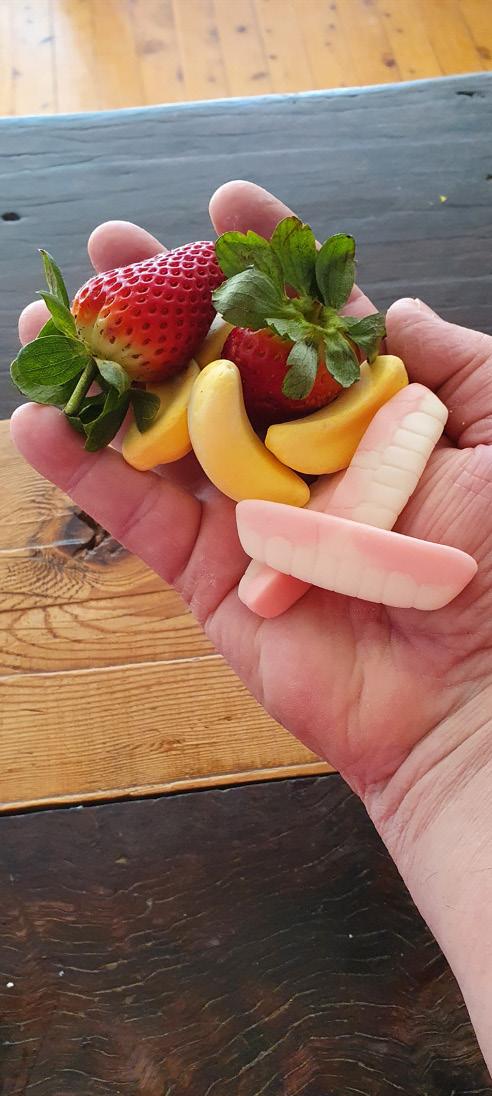
And sometimes Lollies and Cake. I reckon in the future when I’m gone My grandkids will think a great fable I’ll make.
 by Stuart Woodcock
by Stuart Woodcock
39
CREATIVES
DEVOURERS
One born of earth, Bearing darkness and light, Shall oversee the humans and their kind.
The cage’s rusted metal rattled as it was gripped; the curved cylinder housed many fingers belonging to the women who pleaded for mercy. Rema crouched between two other young women who looked two-and-twenty. They both raised their voices, joining the harmony of screams of the others through to the dreary fields of moss, sticks and twigs.
“THE GODS WILL PUNISH YOU FOR WHAT YOU HAVE DONE TO US.”
The hunters of the village gathered the women of their community. They called them di Brokaa the Broken. It was the women who were infertile and the young who disobeyed the orders of the elders. The women were dragged into the cage, cradled in the arms of the forest and auctioned for slaughter. Rema fiddled with the coarse woollen fabric of her plain beige cloak. She was of the silent type; she never spoke and was presumed mute by the other villagers.
The hunters clanged their swords against the cage and the rasp of the metals hitting each other reverberated. One man, Gale – the blacksmith’s son – spat at one of the women. “Shut your tongue, Brokaa.”
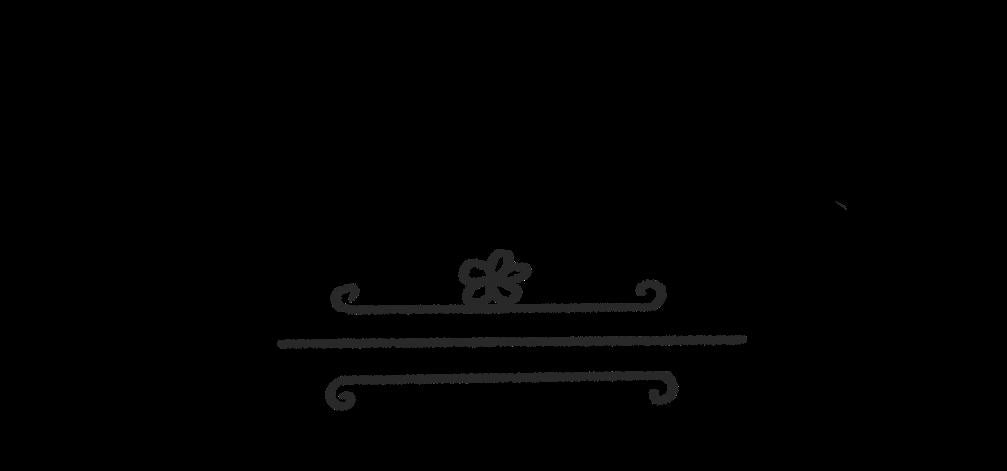
The woman, Emeline, Rema recalled, had her hands fisted around her worn cloak. Rema said, “You wait until the beast gets all of you. You will be nothing but flesh and bones, Huntaari.”
All the women in the cage stared at her, shocked at the words spoken.
Gale cocked an eyebrow, “The mute bitch speaks.” He smacked the bars, Rema recoiled, and he continued to laugh, “Brokaa bitch.” Gale slammed the cage open and collected Emeline, brought her close to the cage and run a blade straight across her throat. “Which one of you will be next?” The other Huntaari’s laughed and jeered, the women terrified of their fates at the hands of these savages.
They waited in suspense and fear. They waited in relief that a beast could be near. They waited in harmony for the beast to slaughter the men and tear… into them.
Nightfall sneaked upon them. Mother nature knitted a pure blackness into the sky, a blanket of protection before the torches were lit. The captors settled in their camp, clashing flasks filled to the brim with whiskey. The women were glad the Huntaari were occupied, so they faced the light and waited for the beast that roamed the night. Shadows of the moon and the torches wavered as every woman stood together. Rema learnt the names of other women close to her: Isolde, Sari, Jone, Milisent, Winifred, Belsante, Sibil, Elia, Odele.
The fire diminished into ever-glowing embers and the early rise of the sun; its golden-fingers shone across the valley. Yet, the beast did not appear. It was complete silence before chaos erupted.
The men ripped open the metal cage, dragging each woman one by one into the open and raining down their swords upon them. Rema backed into the corner with nowhere to escape. A plump and calloused hand grabbed onto her cloak. Her hood was pulled back and her eyes met the ones of her captor, the blacksmith’s boy. She wrestled against him, but he was too strong against her petite body. Rema resorted to her baser instincts – she bit into his neck and ripped out a chunk of flesh.
The blood surged out in thick and fluid strokes. He clasped his hands over ripped skin, and felt the gushing blood over his hand. Rema untangled herself from the hunter’s grasp. She tore her cloak from her body and threw it onto the ground next to the man’s paling body. Rema darted for the tall evergreens; the echoed screams of the others swarmed her as she eyed the hunters around the bodies of innocent women scattered across the woodland. There was a sort of bloodlust in her eyes at the damage done. Her mouth twitched at the many possible outcomes of defiling these men.
Suddenly, a hunter sneaked up behind Rema, her mind so occupied with rage that she was blind to her surroundings. His arm wrapped around her throat. Rema’s head began to feel light and there was a vision of white blurs as she tried to pry his fingers apart. She scratched deep, red, jagged scars into the hunter. Out in the open, Rema screamed silently as her body sagged against the brown, crooked bark of the hollowed trees.
Suddenly, a growl tore through the valley. The woodlands filled with a great shadow, a dark form between a man and a beast. Its blackened fur rippled with the light breeze as it stalked the hunter a hundred meters away from the massacred camp of women. The silence of the camp full of hunters was deafening. The wolf stood still and bent its head, snout tipped to the ground and curled up its gums to reveal razored teeth dripping with saliva.
All nine of the hunters stood motionless, ready for a fight. The wolf snapped and attacked the closest hunter, jumped and bit between the man’s neck and shoulders, ripped his veins out and grinned with blood-stained teeth. A sword was brought down onto the wolf, landing a blow on its hind leg, as it let out a screeching whimper. The hunter was decapitated as a result. Another one’s eyes were gouged out by the wolf’s claws, and another’s stomach shredded, whilst two of the men’s intestines scattered across the forest floor.
Only two of the hunters were left, and both circled this big bad wolf. The wolf snorted in amusement as it ducked into a low bend and stood up on its hind legs, towering over the two men. It could smell their fear. It leapt and both its claws punctured into both men’s hearts and ripped them out of their chests. Teeth gnashed in a frenzy of feeding, the remnants human. The forest floor was a sea of blood. The wolf strode alongside the human massacre. It eyed a clump on the ground, it sniffed around it until it was between its teeth.

A cherry-red soaked cloak dripped with fresh blood. The garment lifted from its mouth as a hand untied the string and retied it around her naked body. Rema swiped across her blood-stained mouth, and remnants of human flesh stuck between her teeth as she made her way back to the village.
by Ahrya Reddy
40 41 CREATIVES CREATIVES
SECRETS OF THE SKULL
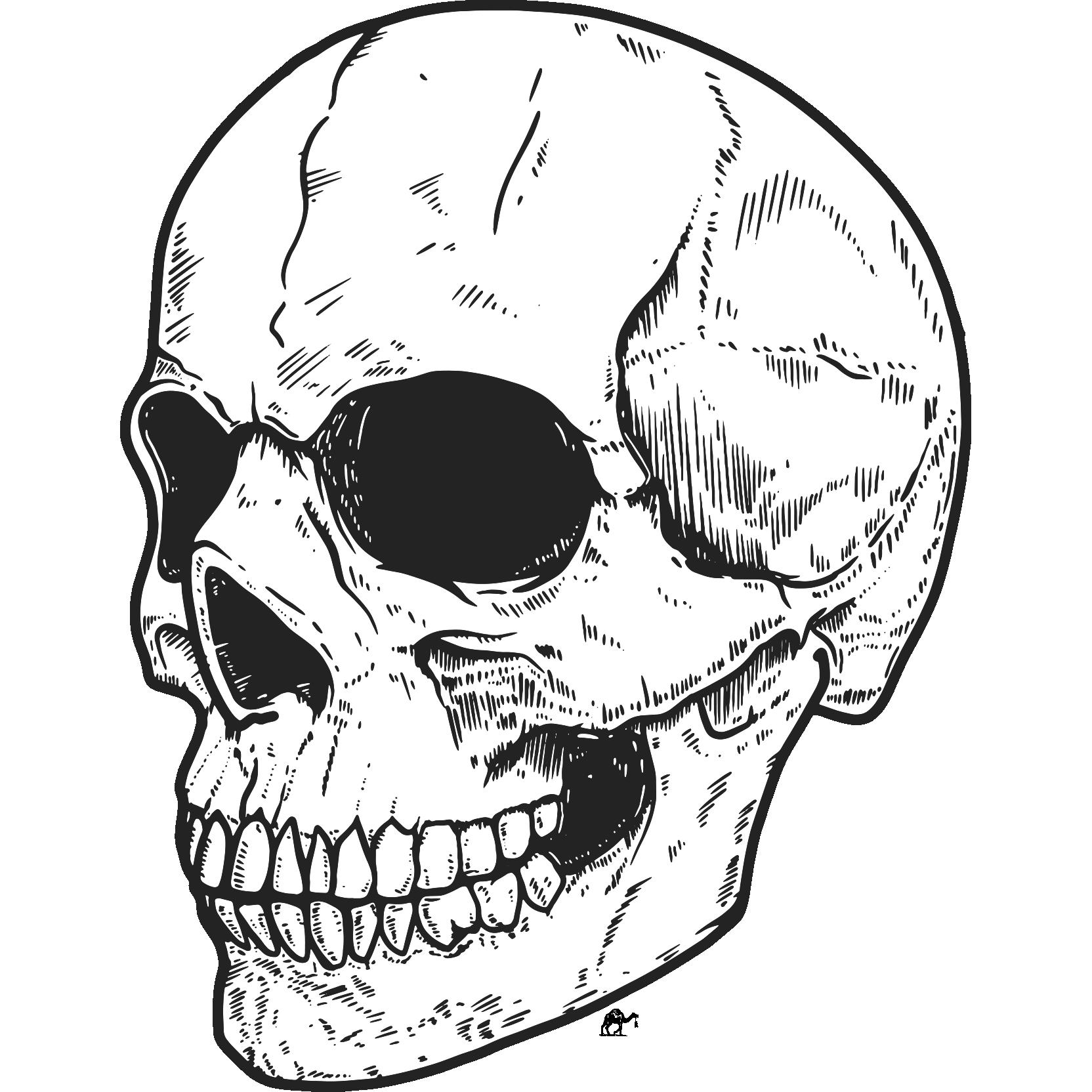
GGliding along the waters of Lake Okeechobee was a small fishing boat. Sun-baked men dotted its wooden deck, backs propped up against a barrel, or elbows resting against the railing as they watched ripples disturb the surface. The water levels had receded after months of drought, leaving swathes of muddy banks exposed. On the shore, a basking alligator opened an eye to watch them pass, but soon slid it shut against the glare of summer. In the shallow waters, the boat’s keel began to scrape, and the men jolted from their trance.
“Haul the nets!” hollered the captain. Calloused hands found coarse rope and moustached lips pulled back over gritted teeth as arms heaved against the pressure of the water. With a final wrench, the nets lurched onto the deck. Fins flapped and silver scales shimmered as the fish cascaded out. Their slimy bodies slapped against the sodden wood, soon scooped up by deft hands and sorted into barrels by type, the small ones tossed overboard.
But something caught the young deckhand’s eye, smooth and white among the gills and gasping mouths. Tangled in the net, dripping wet and tinged with algae, was a human skull. Ralph exclaimed and the others rushed over. Silence settled over them.
“Strange things at the bottom of these waters,” muttered Mr Beake.
“An’ now the water’s shallow, we’re draggin’ ‘em all up,” finished Captain Locke, his face grim.
“Cap’n,” called Michael, by the prow, “yer gonna wanna see this.”
They moved to the front, shifting the boat as they leaned over the side. Fingers broke the water’s surface, gnarled and nibbled by fish, their bones cracked by years under the weight of water. Beneath was a blurred tangle of limbs, only now made visible by the drought and dropping tides. Ribcages breached the mud, navigated by darting bluegills. A sparrow alighted on an exposed hipbone, pecked idly at the remaining flesh, and flitted back into the reeds which whispered as if passing secrets. And everywhere, skulls, so many it looked like a pumpkin patch, pushing up from the soil.
On the journey back, the men spoke in hushed tones, using words such as “who” and “hundreds.” There was talk of the Seminole war, but the theory was soon scratched as only one battle had occurred in 1837, and only thirty soldiers and Native American people had been killed. The others became convinced that there had been a mass tribe suicide to avoid capture and enslavement from the Europeans, and there was nodding all round.
But, that night, Ralph became less certain of their explanation…
He had brought the skull home, if only to scare his siblings with it, but after his sister’s squealing had faded, his fun did too. As the sun sank below the horizon, he stared at its form through the hessian sack in which he had wrapped it. The fabric pulled taught over the smooth cranium and hung limply over the gaping sockets where eyes once stared. With a chill, he realised how small it was. As small as his sister’s.
How had this child died? His mind fought to find fact among the fables.
A draught of wind threw back the curtain, and Ralph recoiled. In the glass’s reflection, there was someone looking back – A girl. She staggered in the street, fighting against the force of a rising gale. Pelting rain darkened the stripes and zigzags which traversed her clothes. Her accusing finger rose, stabbed towards the sac in which the skull was hidden, then swung in a wide arc towards the lake.
Ralph threw open the window. There was nothing there. It was dry and hot, not a drop to be seen. Baffled, he grabbed the hessian bag and swung a leg out of the window frame, slipping onto the street. A form flickered briefly under the streetlamp; pointer outstretched behind her.
“Hey!” he yelled. She vanished. “What…?”
He sprinted after her. Boats bobbed at the jetty as if stirred by ghostly hands. The shoreline was dotted with footprints – just smaller than his own, and barefoot. He couldn’t see far in the dimness, but with each step, more appeared before him, until finally, they trailed off at the water’s edge. Something rustled behind him. A gator…? No. It was her. She emerged in a blast of frigid air. Strands of sodden hair lashed her face, yet nothing could obscure her intense gaze. Her mouth stretched open to scream, but no sound escaped her lips.
“I can’t hear you!” Ralph hollered over the howling wind, but the girl only clawed at her throat, trying to wrench the words free. “What happened to you?” he yelled. Amidst the whirlwind of droplets, Ralph could have sworn there were tears on her cheeks. Her eyes blazed with urgen cy, with agony, but whatever she needed to say would not come out. She only pointed behind her still, though at what he did not know. A gust ripped the skull from Ralph’s hands, and the girl was knocked off her feet. Both were swallowed by the churning waters, and at once, the night grew still. Moonlight sparkled on the lake, obscuring the horrors beneath. It was as if nothing had happened at all. But… something had changed. There was a touch of humidity, the stirring of a restless wind, and on the horizon, the first tentative flashes…
Of an incoming cyclone.
by Kayleigh Greig
42 43 CREATIVES CREATIVES
MUSINGS OF THE GREEK GODDESSES GOLDILOCKS
I. Persephone
He found me in a garden of red and gold, and with a gentle hand, led me down to his dark kingdom.
I had heard the stories. A ruler with a crown of bone and shadow. A being that carried the whispers of death.
But his eyes were oh so warm when he gazed upon me. His rough hands soft, as they wrapped around my own. Like I was a treasure. A blessing. Something worthy of worship.
They had said he took me, claimed me, trapped me. But I was born with a ravenous hunger that could never have been quelled among the flowers of spring.
He gave me an offering and I took it gladly, greedily in both hands.

I bit down into the sweet skin, relishing each drip of sticky syrup down my chin. I smiled, with red stained teeth, as I held the pomegranate in one hand and the crown I had forged in the other.
I was a Bringer of Destruction and a Queen of the Underworld.
II. Aphrodite
A thing of divine beauty, men vied for their claim to me. For a single touch, a single taste, they fell to their knees. My sacred body, an object for their sole gratification.
Never mine to give, I was offered to serve another’s purpose. Governed, stifled, and slowly smothered – but I was not a piece of clay to be moulded by someone else’s hand. I was my own, wanting for no one other than myself.
When I saw him, the man of war, he had let me take exactly what I needed. Skin against skin, we were a raging fire made flesh. With only the stars as our witness, every desire was given form, through each soft caress and featherlight kiss.
Never was I flushed with thoughts of shame or condemned by humiliation. No one could claim what was mine to give freely as I chose.
I was love. In all its gentleness and wonder. I was love. In all its passion and fury.
III. Hera
I had caught his affections. Lustful stares and sickly-sweet words that did nothing but grate against my skin. I had never wanted him. But with rough hands, tight around my throat, he ensnared me. Claimed what he saw as his.
Placed in a gilded cage high on Mount Olympus, I played the role of devote wife well. But behind the solemn veil, my heart grew colder, edges sharper, all warmth lost from the first brush of his fingers against mine.
The whispers, they had followed me. His absence and drifting eyes, the subject of their heavy judgement. But I was more than just his other.
I was a creature of devastating power. The Queen of Olympus. A ruler in my own right.
I sat upon his gilded throne, reaching out a hand and took and took and took. They realised too late the untempered wrath that festered beneath my skin, waiting to be unleashed.
I was something to fear. All would fall on their knees before and beg for mercy.
IV. The Goddesses
We are only a few of many but the past is held in our hands. We are the Queens and the Goddesses. We reclaim what was told about us.
We rewrite our stories.
by Zoe van der Merwe
on the untouched horizon, a boat wandered into view. its captain looked lost and white and hungry. not starving, just staring through his helmet of yellow curls. i locked my home and rushed my family out. no chance that greedy ghost was getting in. i didn’t even let my son finish his cassava.
“into the trees,” i instructed. we will watch along with the animals.
onto the shore, the captain sunk his boots into the sand and looked around. “i am hungry and i am tired and that big boat is a bore and i am not turning back.” his teeth were still milky; they glinted like pearls through the ferns. from the trees, we watched the lost captain instruct his crew. he pointed at my home and said, “there. that ugly hut.”
he used his golden locks as keys to unlock the door and he marched in, nose pinched. we couldn’t see him then but we could still hear his shrieks. “what is this white mush? it’s hot and disgusting.” a clatter of bowls on the floor. “and this one. this one’s cold. these animals don’t know how to cook.” then there was silence and i listened to my son’s unsteady breaths. there was a burp and then, “primitive food. go get me some rum.” i wondered why he had eaten the cassava still. there was a roar then, like a jaguar, as the blonde captain yelled, “don’t these animals use chairs?” he huffed and said, “eck! the floor is dirt,” and he moaned and said, “my goddamn back.” we heard something being kicked and my son whimpered. “get me a stool, will you?” said the captain, and we saw a crew member run from the door and back to the ship.
“i really am tired,” the captain complained. very quietly, almost like a whisper, my son wondered, “don’t they have beds on the ship?”

“they do,” i said, “but you remember the stories? these white ghosts like to take. even if they already have something, they take it again so they have two.”
“greedy ghosts,” said my son.
“you hear that?” the captain yelled. we lowered ourselves deeper into the ferns. “i think those bears are out there. sweep the trees.”
“will the white ghost haunt us?” asked my son.

“yes,” i said. “forever.”
by Bruna Gomes
44 45 CREATIVES CREATIVES
44 45
STORY OF THE WORLD
TThe world is the Greek summer at, let’s say, 35 degrees. It’s sluggish in the late afternoon, no one wants to work now, same story, same same story. The boy’s erastes has told him that if he can scribe, let’s say, a scroll’s worth before sundown, he’ll get some extra money and attention. The boy rolls his eyes to himself, ugh, fine.
So here he sits in this cramped little room, scrawling away despite his exhaustion, despite the damp upper back of his himation. The ink runs low. The other scribes’ elbows keep bumping him. He almost ruins the scroll multiple times. The Aramaic is messy, the hot breeze through the door suffocates, but he tries his best anyways. He does a good job.
He manages to get the scroll done and gives it to the erastes, who’s also tired out from the heat. He skims over it. Okay, looks great, take three drachmas, one for you, two for the poor family, I’ll see you tonight.


The next day the erastes dresses as someone else, takes the scroll to the hill, and starts preaching. He gets into it. He’s got such a convincing and passionate voice that people start to crowd around him. The power of not only the Lord’s voice but also his own puts genuine faith
into peoples’ hearts. Some fear too. No one yells at him or takes him away. When he finishes, the crowd themselves go home and spread the Holy word to their wives, children, cattle, friends; directly quoting him and everything.
The erastes goes home content with today’s work. He reads through the scroll again, after all it is the Lord’s word, but then realises – oh. Ohoho. My eromenos has written kamelon, not kamilon. I have been reading kamelon. I have been preaching about camels this whole time. Hohoho.
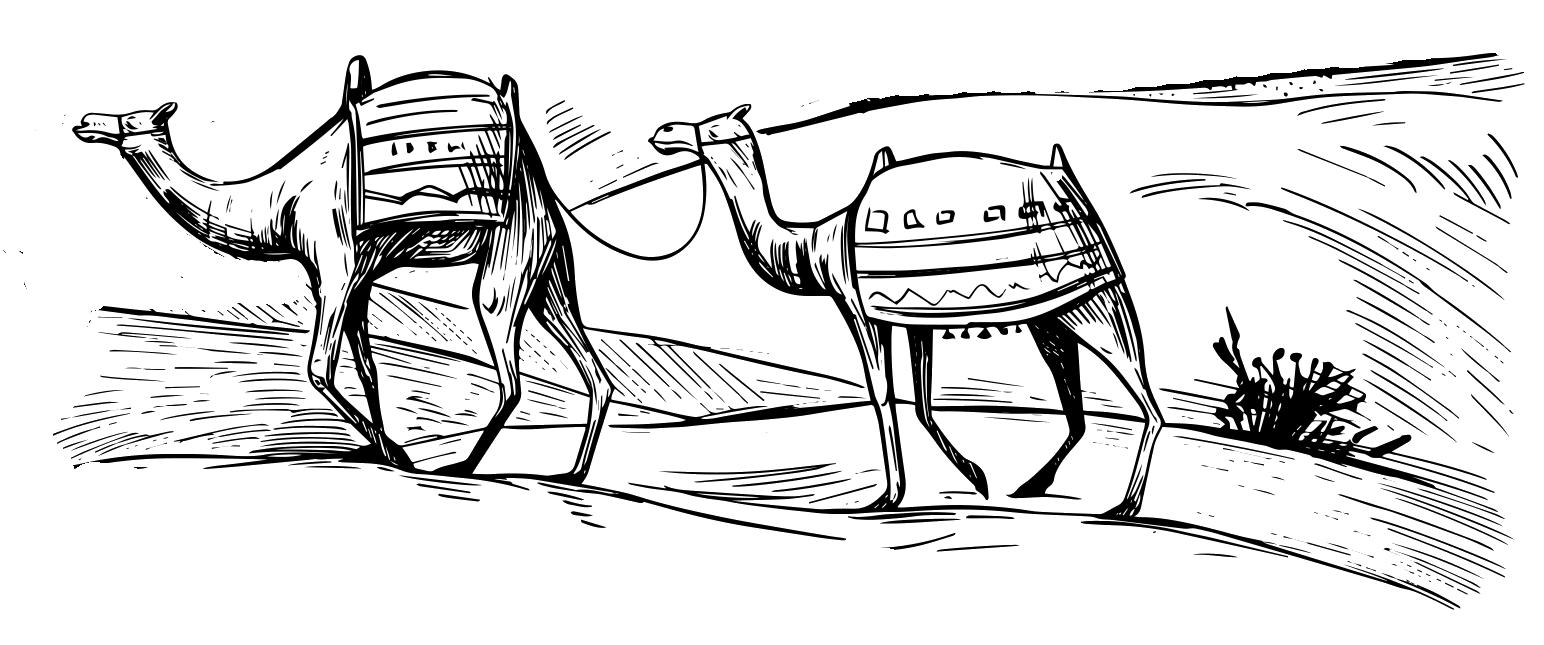
The erastes tells the boy the funny story; they laugh and shrug.
Now, the world is Christian. So many stories, stories I don’t have space to tell you about, have happened to make the world Christian. Some poor Christians are okay with being poor: again, Matthew tells us, it’s easier for camels to go through the eyes of needles than it is for rich people to enter Heaven. Hoho.
Alright, the world’s now being translated into English, but remember that everything is more complicated than it looks and God, nothing can be simple anymore. So there’s another scribe. He’s staring at a word he’s never seen before, arsenokoitai. He knows that arsen is man, and koitas is bed, but he’s never seen them compounded before, arsenokoitai. What the fuck does that mean? Man-bed? He pictures a bed doing things like a man, hohoho, or a bedframe having a little carved head on it who talks(!), cute.
It probably means something different when put together, like how butterflies are different to butter or flies, who knows. It’s just that this must be a rare word, or it’s supposed to mean something specific he’s just not sure about. Anyways, it’s only one word out of how many; only one sin out of how many; so he takes it to mean something like homosexuality or adultery.
The scribe translates as coherently literal as he can, and he does a good job. After he copies out today’s sections, he passes his work to the non-Greek speaking scribes, so they can copy it out in more English. His hand hurts from all the work today. He needs a break. He forgets about the man-bed.
Now, the world is English. It’s passed the 19th and 20th century, again with the many stories I have no space to tell you, and now it’s 2022 and English-speaking. Yes, the present, finally! Some Christians are not okay with other people being gay. Again, Leviticus tells us, you can’t lie with another man, you’re an abomination. Now the world has 11 countries death-penalising LGBT people. The highest rates of suicide among LGBT people.
Ohoho. The butterfly effect.
le, it’s still all about living well, isn’t it? So, how do you do that? Now all over the world you do it with money money money.
Scribes are gone, pretty much. Though things to be passed on still exist. Lots of people want to be storytellers, writers, journalists, but there’s no money in it. Most of the money now is through stories relayed online, especially the trending ones.
Great, so, there’s a news company and journalists who actually do get paid well. They have enthusiastic, persuasive, headstrong voices, but to keep the job they’ve got to keep the clicks. There are too many stories to cover, let alone cover in a digestible, simple-worded way for the millions.
The journalists were interested in their field because they wanted to bring happiness to the masses, truth to the masses, maybe change for the masses. Through storytelling, which is the Holy word.
But there’s a lot of pressure to do well at work; a company is for money after all. Before the easy reading is the difficult one. Overwhelm impacts their wellness of living, but they write anyways, and they do a good job. They manage to write about the hot topics, the crises, the calamities, the reforms, in a general, digestible way for the millions. In a way that either goes against the majority opinion to generate clicks or with the majority opinion to generate clicks. In a way that lets them say, actually, it does pay, I’m living pretty well.
Now the world is millions: millions reading about millions, talking about millions, through those general, digestible stories. Here are some of the stories covered:
27 million refugees, to which millions say go back where you fucking came from.
419 parts per million, to which millions say stop the emissions!
572 million reported COVID cases, to which millions say wear a mask or this is fake!
Okay. So now, all over the world, people feel they really lose. Now, all over the world, people feel they really win. 2022: the age of digital, social media, two-page articles. Stories come in that form now. Now, all over the world, people still go back to Aristotle, they never left Aristot-
50 million views on a TikTok storytime, to which millions say im gonna try this lol.
Hohoho. Then the world is its stories, yes?
by Clara Kristanda
CREATIVES CREATIVES
46 47

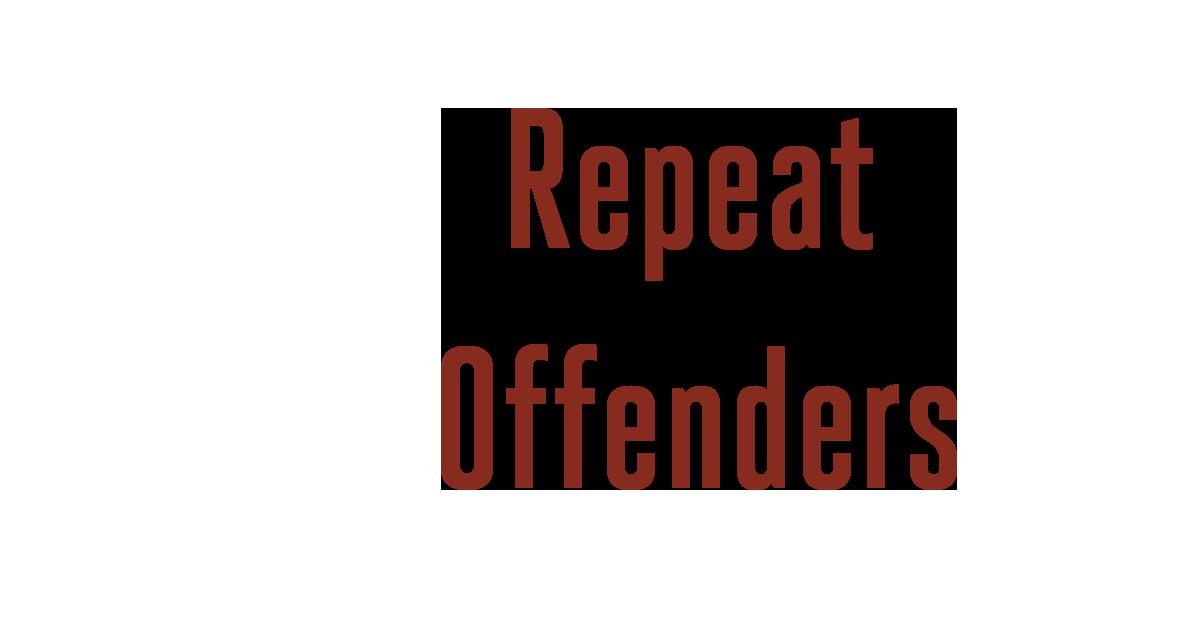
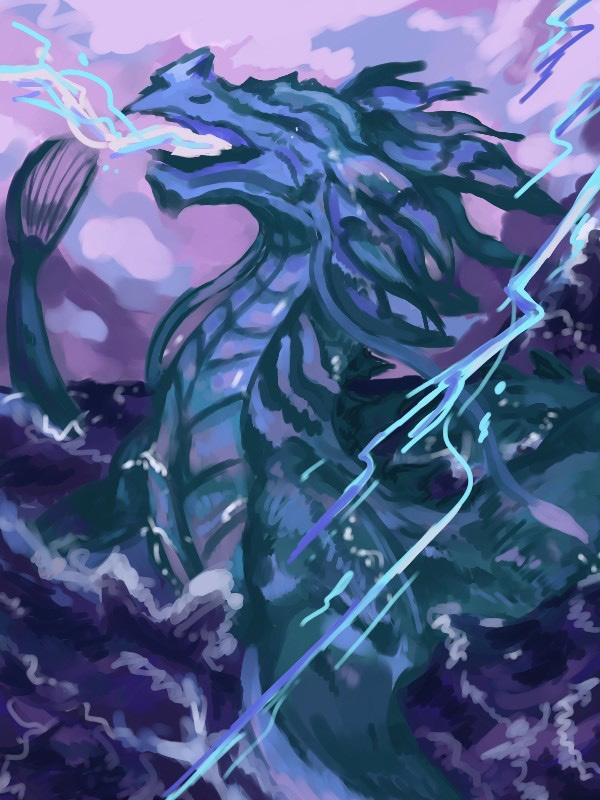
48
Untitled Artwork by Dex
REPEAT OFFENDERS
NIC’S FLIX:
‘Where the Crawdads Sing’ is a Faithful Adaptation, But a Disappointingly Mediocre Result
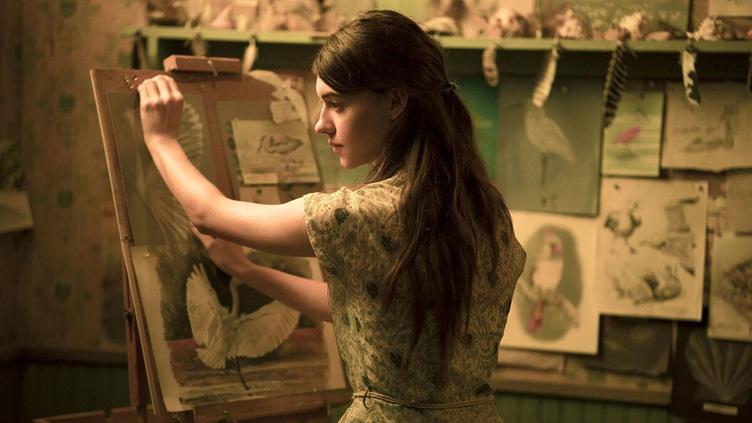

(Harris Dickinson), who exploits her for sex and things end badly between them. In 1969, Chase is discovered dead, having fallen from a fire tower, but evidence points to foul play, and Kya is immediately suspected in his death. What ensues forces her to confront the prejudice, assumptions and trauma that have followed Kya her entire life.
It is worth briefly comparing Where the Crawdads Sing to Delia Owens’ novel as the source material, though the film should stand on its own. Nevertheless, it is true to the novel. Fans will be left reasonably satisfied. It makes a structural shift that loses focus on balancing its genre elements and makes me more appreciative of how Owens handled the switches between dual timelines in her novel. It lacks some of the compelling metaphors, poetry, social commentary and lush but admittedly self-indulgent prose of nature, most likely due to the constraints of adapting a novel into a film. But the same story is there, along with Kya’s characterisation. Much like the novel, Where the Crawdads Sing’s final twist trusts the audience to think of its logistics and fit the piece into the puzzle; a solid case of “show, don’t tell.”
There is a common saying that life imitates art. In the case of Where the Crawdads Sing, it may be the opposite. When digging deep into the novel’s origins, one necessarily learns about author Delia Owens’ history. She and her family, as American conservationists, were allegedly involved in the shooting of poachers in Zambia that left one person dead. Owens and her family fled to America as they were wanted for questioning by the Zambian government. To this day, the case remains unsolved, and we may never know the full details (You can read more information about the case in Jeffrey Goldberg’s article The Hunted in The New Yorker). Perhaps the answers can be found in the novel. Either way, the real-life story proves more compelling than Olivia Newman’s film adaptation of Where
the Crawdads Sing.
In the small town of Barkley Cove, North Carolina, there is a local story of the Marsh Girl. Various rumours spread through the community: she’s a wild creature, a feral animal, a monster, a murderer. These things couldn’t be further from the truth. Her name is Kya Clark (Daisy Edgar-Jones) and her story is that she and her family were abused by her alcoholic father (Garret Dillahunt) before being entirely abandoned. After learning how to survive and raise herself in the marshes, she resists the crushing social norms of Barkley Cove while befriending the ostracised black owner of a gas station, Jumpin (Sterling Macer, Jr.), and his wife, Mabel (Michael Hyatt). As Kya grows up, she develops a relationship with her childhood friend, Tate Walker (Taylor John Smith), who teaches her how to read and write before leaving for college. Eventually feeling abandoned by him, Kya falls into a relationship with local quarterback, Chase Andrews
But being a faithful film adaptation doesn’t automatically lead to greatness. Whenever Where the Crawdads Sing is shot on location, it looks great. Cinematographer Polly Morgan captures the beauty of nature and how that allows Kya to heal from her horrors, something Owens’s prose captured, and thus the style is not without merit. However, the look of Where the Crawdads Sing is too polished for its own good. The saturated colour grading makes sense when it establishes the Southern tropes of Barkley Cove to highlight the artificiality of social norms and how its unsuspecting nature disguises ugly secrets underneath the surface. But the forests and marshes look too tidy. Realistically, Kya should appear filthy. The locations appear too carefully organised, failing to capture the gritty textures and authentic realism of Owens’s writing, and with that missing, Where the Crawdads Sing lacks an entrenching atmosphere to get lured into.
What is also missing is a sense of tonal consistency. Where the Crawdads Sings struggles to interweave its coming-of-age, murder-mystery and courtroom drama elements. The film uses the past timeline to tell Kya’s harrowing story, and yet it’s missing an emotional impact, and not just because of its stale look. Lucy Alibar’s screenplay spends so much uninterrupted time with the past and even fails to build a tangible romantic mood within any of Kya’s relationships that it’s easy to forget a murder has taken place in the present. These awkward transitions between timelines are made worse by the choppy nature of Alan Edward Bell’s editing, and creating a further imbalance between the genre elements. So much of the murder-mystery aspect feels skimmed over, failing to present enthralling clues, evidence or investiga-
REPEAT OFFENDERS
tion, and the courtroom scenes, reminiscent of 90s legal dramas, feel lifeless. Where there should be tension brewing within the community and in Kya’s life there is none, and the flow of events feels anticlimactic. For book fans, it will be engaging enough because of the fine direction by Olivia Newman, who is trying to find her voice amidst Where the Crawdads Sing’s unevenness. That’s also another massive problem. The direction is too fine to the point that it lacks a haunting vision. Such a simultaneously depressing and hopeful story does not have the specific emotional response it should be evoking, and it feels like a film anyone could have directed.
Regardless of Where the Crawdads Sing’s sloppiness, its target audience will find something to emotionally identify with that can be found in Kya’s characterisation. She stands out because she is given a personality more than any other character and there is an active interest in telling her story, which mostly remains intact. It leaves us to watch the traumatic wounds of abuse, prejudice, and abandonment deepen and linger in her childhood and her brutally isolated transition to adulthood. There are some of us like Kya. She’s a damaged soul, one who can’t heal in the presence of a judgmental society that never wanted to give her a chance. Only in the depths of nature can she find her place, resourcefulness, and strength. While the character relationships suffer from an inability to build emotional weight because the men in her life lack interesting traits, Kya’s story will rile up feelings in the audience: rage, shock, devastation, tranquillity, and warmth. Where the Crawdads Sing doesn’t successfully build and manipulate these emotions, but it infuses Kya’s past and present with a solid, acceptably familiar mixture of tragedy and hope.
Without Daisy Edgar-Jones’s performance, the essence of Kya’s characterisation would be missing. While Where the Crawdads Sing supports a solid cast, with Taylor John Smith and Harris Dickinson being serviceable co-stars and David Strathairn offering a sympathetic performance in his screen time, Edgar-Jones gives her all here. She’s tough but holds back on any primality, capturing her character’s emotional inexperience, her difficulties of staying afloat in a discriminatory world, and the sincerity of the connections she forms. When she cannot hold back on the anger, it’s unleashed in a raw manner. She sells her emotional reactions to the highs and lows Kya goes through, and it’s a performance that supports the structural core of Where the Crawdads Sing. It’s unfortunate that her strong acting is trapped in a middling mess of a film.
Even if Where the Crawdads Sing is faithful to its source material, which will leave readers and audiences pleased enough, it is let down by its disappointingly conventional nature. Daisy Edgar-Jones’ mesmerising performance and Taylor Swift’s original song, ‘Carolina’, do their best to fill in the missing emotional gaps. The uncertainty of committing to its genre or visual elements means the film is lost in a land of missed opportunities that try to elevate its source material into something special.
Score: 5/10.
by Nicholas Chang
50
51
GRAPEY BOOK CLUB: MAGGIE STIEFVATER’S BRAVELY (2022)
Before you read on, I feel that I must warn you: this review is incredibly biased; magnanimously positively biased, because Maggie Stiefvater is one of my favourite authors, and I honestly feel that she could do no wrong. This book could have been objectively bad, and I still would have given it a full-star review.
Stiefvater’s writing is, I think, best described as magically honest. Most well-known for The Raven Cycle (2012-2016) and The Scorpio Races (2011), she firmly fits within the genre of Young Adult (‘YA’) magical realism bordering on fantasy, with a penchant for exploring the more enchanted elements of Irish and Scottish history. As Stiefvater writes in the Author’s Note at the end of her newest novel, Bravely, she is, alongside being a writer, “also a bagpiper and harpist who was raised in the peculiar pan-Celtic mixing bowl that is American Scottish-Irish diaspora, and I wanted to put as much of that culture in as I could”. These elements ring true throughout this mesmerising novel.
Stiefvater was commissioned to write Bravely by Disney Books, setting the story of the novel several years after the close of one of Disney and Pixar’s most successful films about a “non-princess princess”, the independent and rebellious Merida of DunBroch, in Brave (2012).
The publication of Bravely comes at the ten-year anniversary of the film’s debut, which falls in line with the magic of the story. Since negotiating a truce with her mother where they refuse to let anger spurn fights between them (leading to one of them turning into a bear), Merida has travelled all over Scotland in pursuit of becoming someone, or something. Otherwise, very little has changed; DunBroch has stagnated, people have fallen into time-worn ways, and magic is hibernating. The family DunBroch is safe but also a danger to themselves.
By accident, Merida finds herself making a bargain with two aged gods to save her family: the god of ruin, and the god of creation; the earnest Feradach and the wily old Cailleach. Merida can change her family and herself, or they must leave this earth to make room for new growth. The gods must ensure the balance.
The novel follows the family DunBroch over four seasons as Merida aims to inspire revolution and stop sluggishness and apathy in its tracks, or see DunBroch ruined forever. With family members in tow, Merida undertakes a series of epic journeys to other Scottish kingdoms, and learns more about the world than she had in her previous year of travel-
ling. She has done so much and yet has stayed so much the same. As Stiefvater writes, “Some storms make a lot of noise but move no rooftops.”
Stiefvater’s writing always manages to tug on my heart-strings; the magic that is steeply grounded in medieval history is believable and thought-provoking. The central conflict –Merida must save her family and her home by changing them, but does she like what it means for DunBroch to be changed? – is something of a spell the reader is put under, because we are forced to question what that kind of change could mean for ourselves.
Being a YA novel, Bravely is easy to read and fast-paced. At times, I thought that perhaps it tried to span too large a timeline for its three-hundred-and-sixty-odd pages, but by the last page, I realised I didn’t want it to end; I didn’t know how to bear this story coming to a close.
Stiefvater writes in a poetic and humorous kind of prose about the existential dilemmas of life, localising them to the mystifying and confusing era of life that is a young woman’s emergence into adulthood – something I am far too familiar with for my own taste. It is not only about changing the world and changing the self, but also about the different kinds of love and what it means to be known. Stiefvater spoon-feeds these difficult themes to the reader, and by the end you’ll be grateful for it.
Grapey Bookclub Review: 5/5 stars
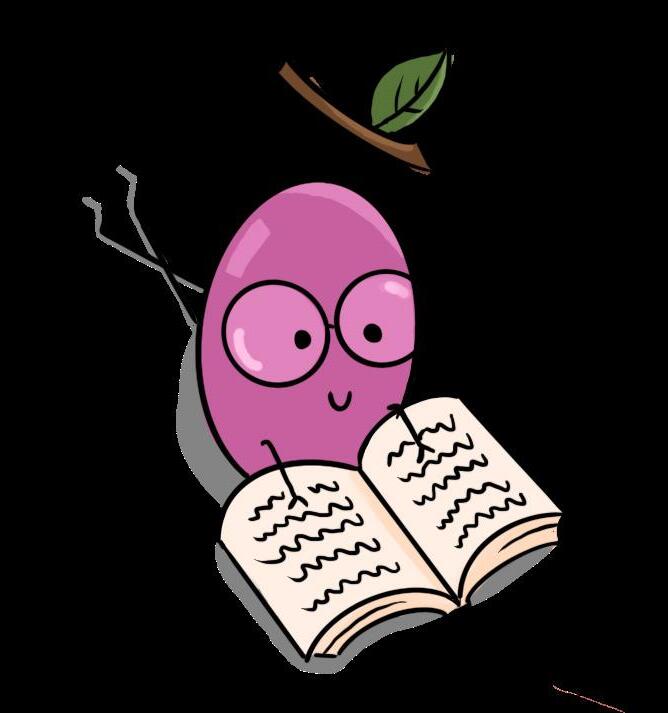
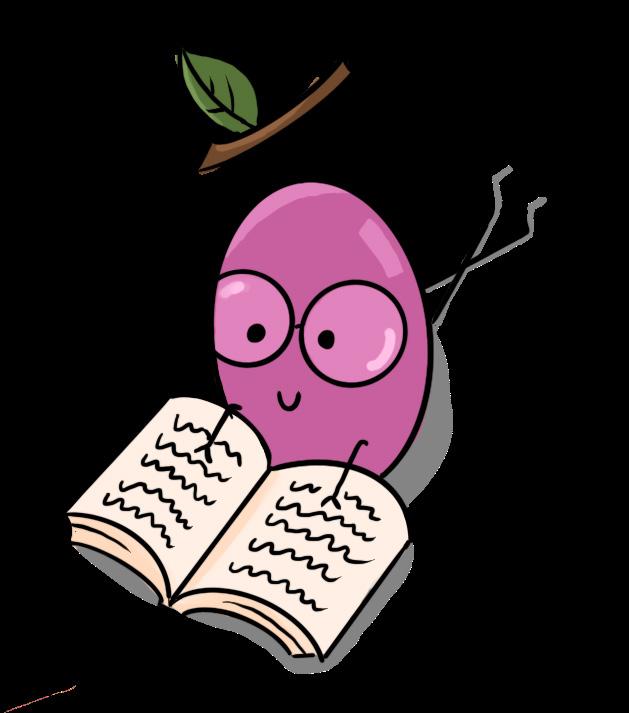 by Nikita Byrnes
by Nikita Byrnes
REPEAT OFFENDERS
53 52 REPEAT OFFENDERS
53
Macbeth A Tragically Musical Comedy: A Review
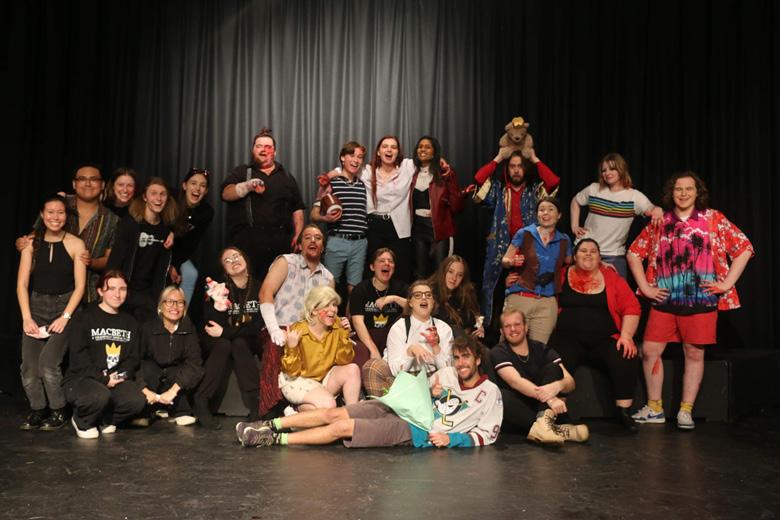
We see Macbeth not as a man’s man but as a bro’s bro. He’s caught up in a tumultuous bromance with his best friend Banquo, an aspiring stand up comedian. Lady Macbeth played by Sachi dominated the musical with her strong-independent-woman mentality and fearlessness. This Lady Macbeth is not to be messed with, as she is the true Macbeth this time around.
Simon Buchner’s performance as ‘the witches’ set the tone for the whole musical, casting a spell over the cast and audience. His performance was mysterious and alluring, and his presence on stage always led to twisted turns of fate. Claire Garment’s Ross and Madison Leidich’s Lennox stole the show as their undercover secret agent mission turned into something more. Simon Emmerson’s Macduff and his sock puppet was the voice of comedic reason through the musical.
PODCAST REVIEW: Let’s Talk About Myths, Baby!
TW: Discusses Sexual Assault

the in-depth reading of Medusa as a survivor of sexual assault, and as a metaphor for the treatment of women. Spoiler alert, her head was cut off. Albert points out that male characters resented her power and treated her as a monster while she was alive, and only really valued her insofar as her corpse assisted them in their little quest.
“Macbeth: A Tragically Musical Comedy is an explosive musical that will have Shakespeare dancing in his grave. A pop-rock journey 400 years in the making!”
This original production written and directed by Dominic Serov and Sabrina Ekstein re-imagines Shakespeare’s classic tragedy, transforming it into a tragically hilarious and upbeat musical. Sitting in the second row of Macquarie’s lighthouse theatre, a seat over from the ‘splash zone’, we settled in for a night of bewitched bloody betrayal, unexpected love affairs, comical musical numbers and sock puppets.
Macbeth: A Tragically Musical Comedy is a fantastical modern retelling for contemporary audiences. With gender bending queer excellence, the cast brings new life to Shakespeare’s characters with mischief and fun. Set in Australasia Scotland, King Duncan’s court of Dunsinane has been infiltrated by a witchy prophecy as Macbeth and his wifely accomplice Lady Macbeth redefine regicide. The musical uses current social commentary to subvert power structures and twist the original storyline into a shocking series of events. Music Director Dominic Serov composed witty original musical numbers accompanied by a live band hiding in the wings, filling the theatre with vibrant melodies and drama. However, the live accompaniment did sometimes overshadow the lyrics and dialogue on stage with momentary microphone malfunctions. Those temporary moments only added to the charm of this original student-led production.
Macquarie’s musical society president Sophie Szecsodi portrays Macbeth like we’ve never seen him before.
The whole cast ensemble worked cohesively together to bring the audience big song and dance numbers that were fun and entertaining. Each character was a marvellous caricature of their original counterparts, offering humour in times of great betrayal and intrigue. Macbeth: A Tragically Musical Comedy was a refreshing and fun take on Shakespeare’s Macbeth. The Macquarie Musical society did a fantastic job bringing this original production to life. I would advise to make sure not to sit in the splash zone I mentioned earlier or you may get blood on your hands!
by Anthea Wilson
With a catchy sing-song title and a wholesome and learned host, Let’s Talk About Myths, Baby! offers listeners a humorous and critical perspective of Greek and Roman mythology. Host Liv Albert uses her English Literature and Classics background to create a podcast for lovers of mythology and the ancient world to learn about their favourite myths, gods and goddesses as well as real historical events and people. Albert narrates the origin stories of everyone, including Zeus and Apollo, and tells well-known stories like Oedipus’ unfortunate tale of incest and murder and the story of Hades and Persephone.
Let’s Talk About Myths, Baby! began in 2017, and over the last five years, has recorded over 250 episodes, though I could be wrong on that as my grasp of Roman numerals isn’t as strong as it used to be. This podcast is perfect for lovers of Greek and Roman mythology, or those who want to learn more about it. In Let’s Talk About Myths, Baby! Albert reads classical literature (with plenty of critical and witty asides) including the works of Homer and Ovid. I know personally that despite being an avid reader, ancient literature can be onerous and cryptic, and Albert does an amazing job at presenting these intricate narratives for a contemporary audience.
As someone familiar with well-known tales like the Trojan War and Heracles, I was aware of the unavoidable issues modern audiences have with these stories. Almost all include rape, misogyny and violence in varying levels, and for fans of the ancient world and Greek or Roman mythology, it makes these stories difficult to digest.
What Let’s Talk About Myths, Baby! does best, and what I would wager is the reason for its success, is the integration of critical and diverse perspectives that are often absent from retellings and analysis of mythology and history more generally. Albert herself presents these stories with frank and considered commentary that highlights the concerning frequency of goddesses and female characters being subject to horrific behaviour. One example is
The podcast also has conversation episodes, where Albert and an academic or historian discuss the complex and challenging themes and perspectives reflected in mythology and historiography. These diverse and inclusive views problematise the mythologies and versions of history we came to know. For instance, Albert invited Justin Lorenzo Biggi to chat about Athenian citizenship and disability in ancient Greece. Albert makes sure to release LGBTQ+ specific episodes that considers same-sex relationships in Greek mythology like Callisto and Artemis, and queer characters like Heracles and Apollo.
Albert endeavours to present critical retellings of myths that expand the discussion of ancient understandings of gender and sexuality, and challenges the historiography in its attempts to perpetuate heteronormativity and censorship of trans and non-binary characters. While embracing her complicated love of mythology that many from her audience share, Albert manages to integrate strong and balanced criticisms into the podcast. She touches on a range of important issues around claims to truth and the regulation of knowledge, and the pervasive misogyny in the Greek and Roman mythology community. Problems of translation and limited sources highlight how myths have been manipulated to promote certain values and erase themes and characters that didn’t fit the societal ideals at the time.
This is a fun and informative listen for all audiences. If you love storytelling with a humorous and critical twist, I would recommend Let’s Talk About Myths, Baby!
 by Harry Fraser
by Harry Fraser
OFFENDERS
REPEAT
54 55
REPEAT OFFENDERS
































 by Stuart Woodcock
by Stuart Woodcock














 by Nikita Byrnes
by Nikita Byrnes


 by Harry Fraser
by Harry Fraser



